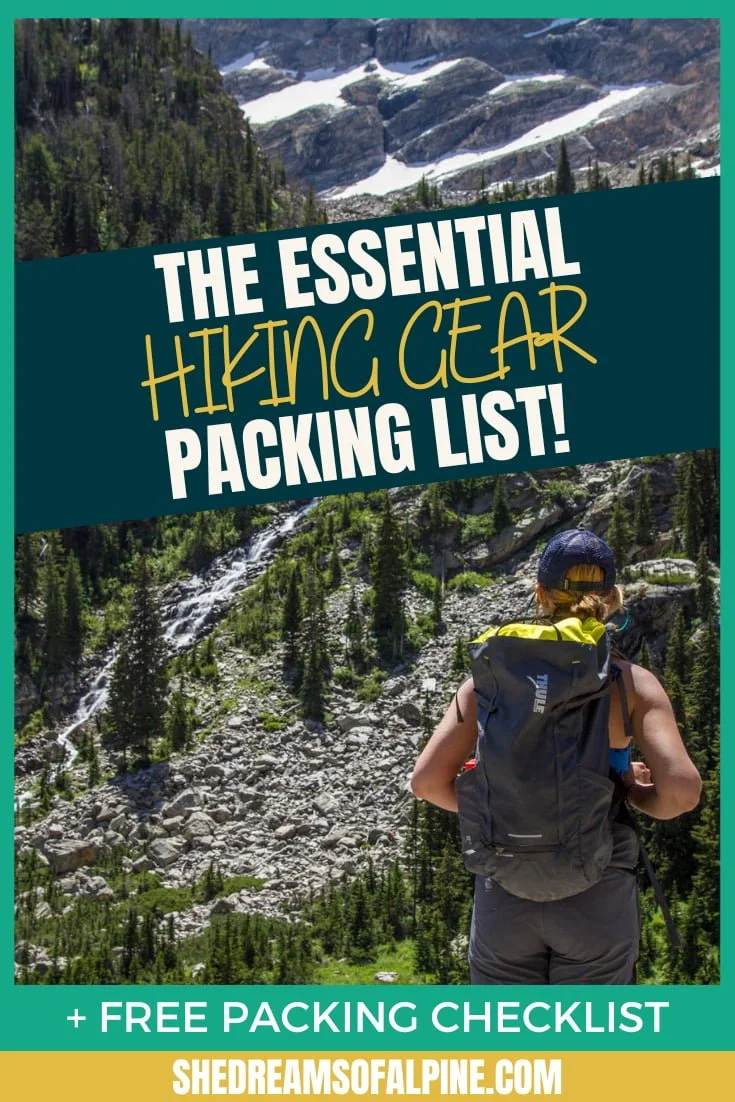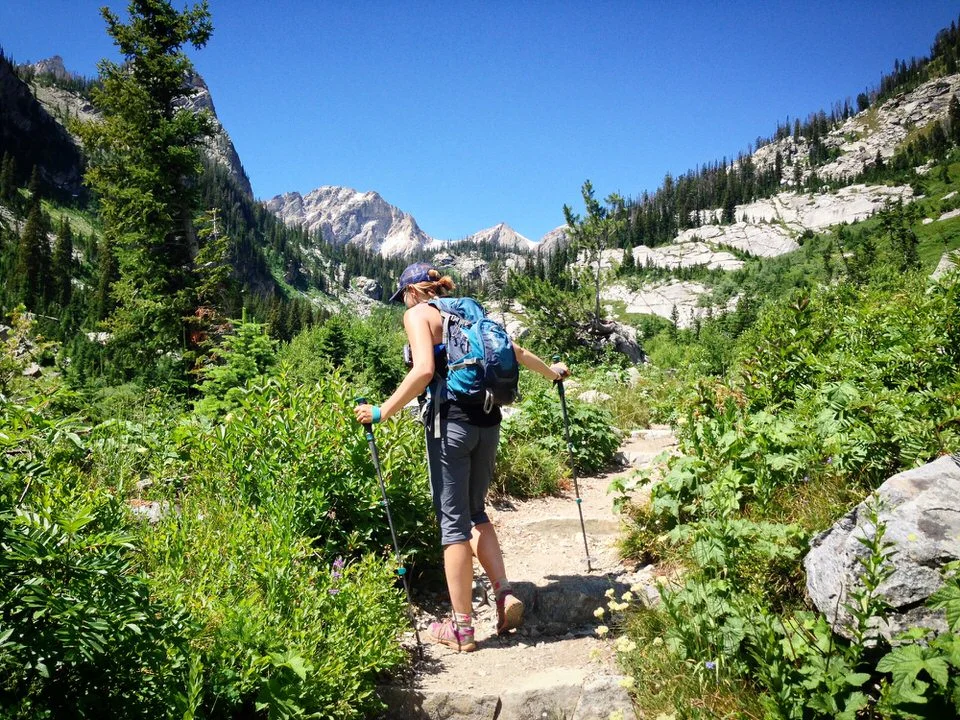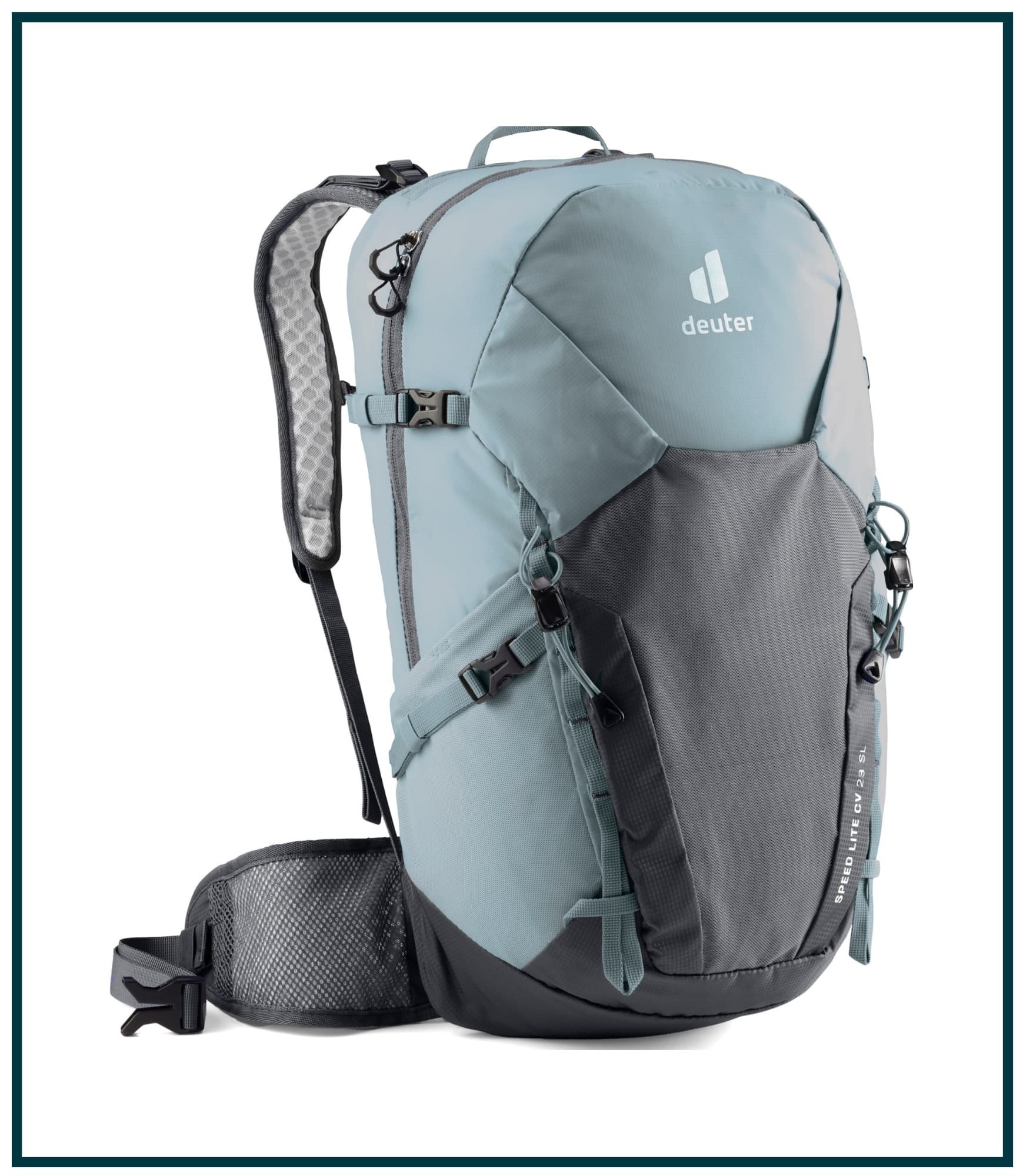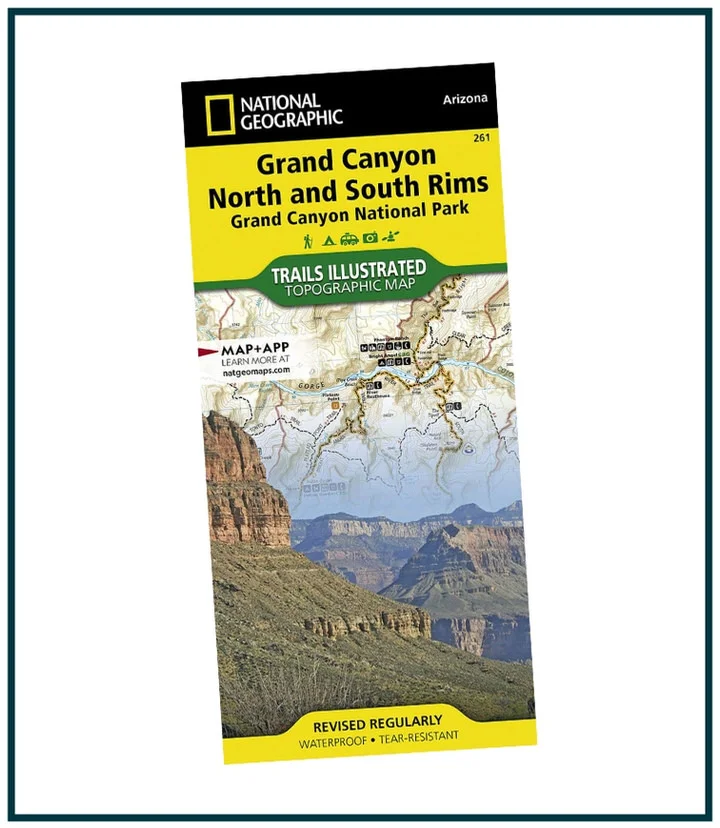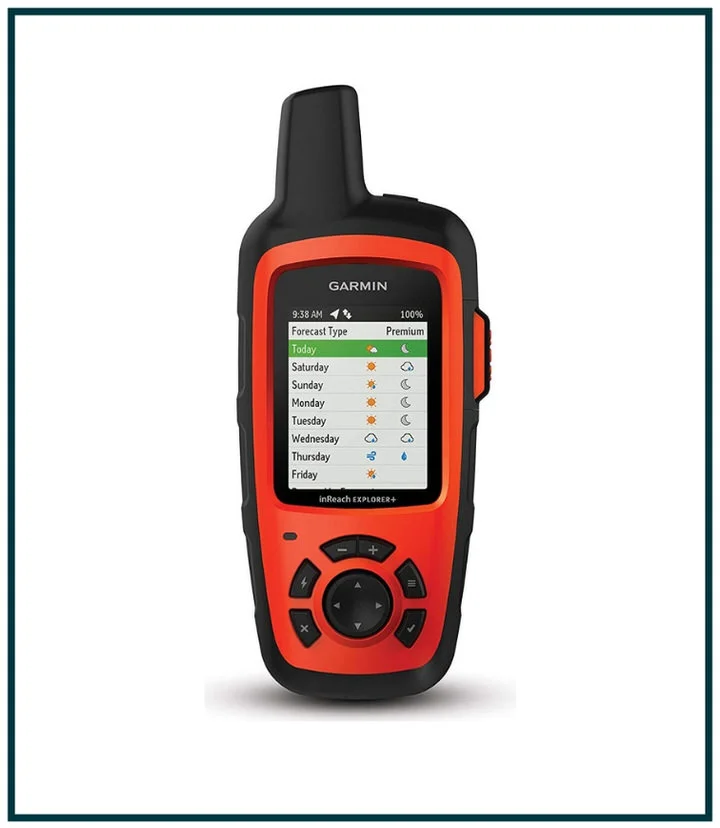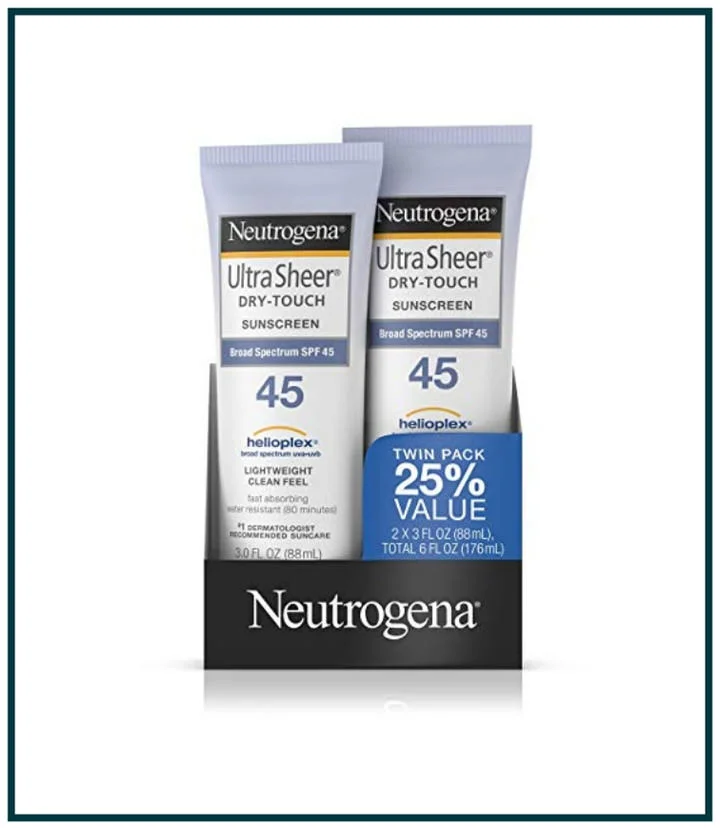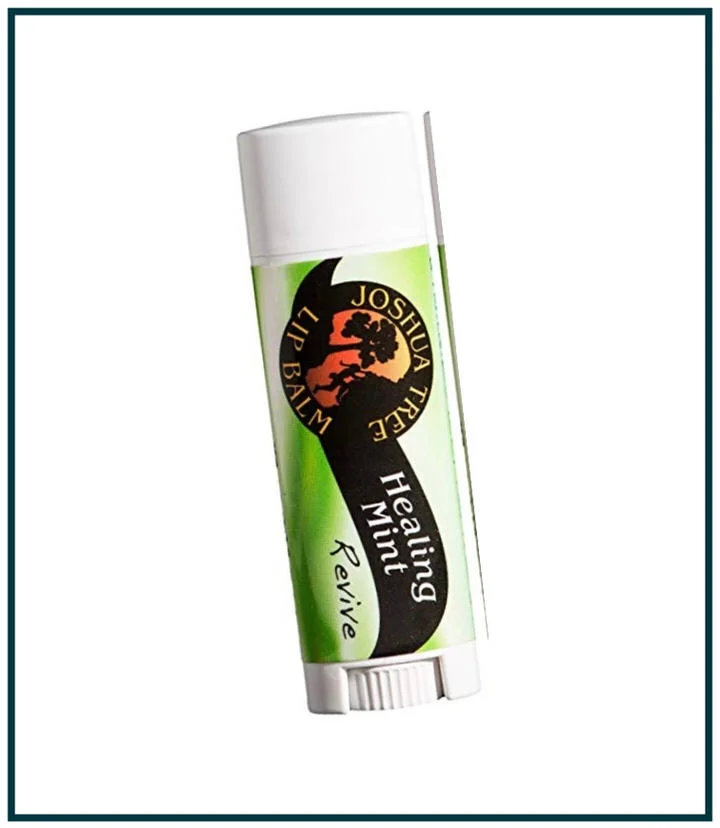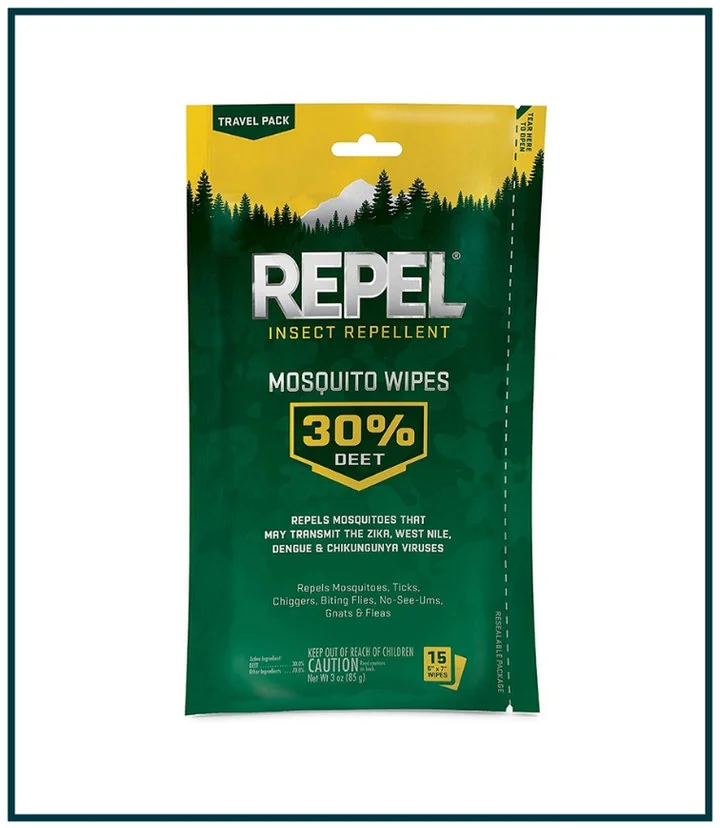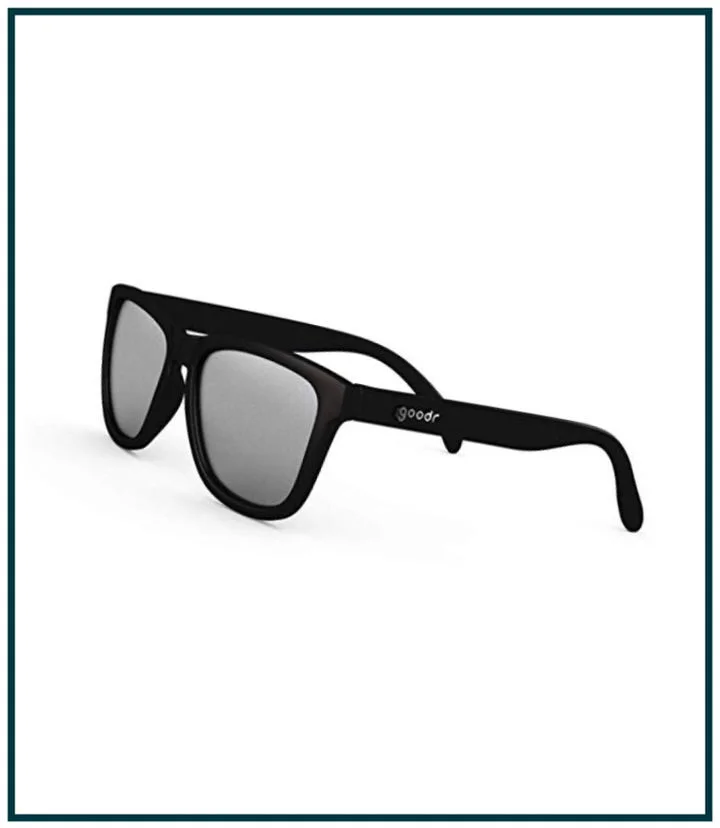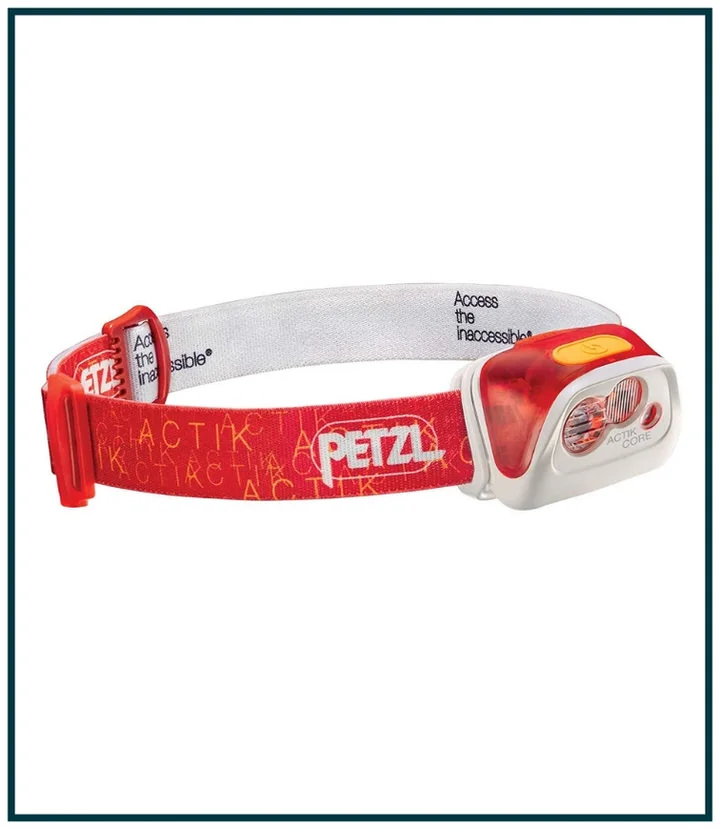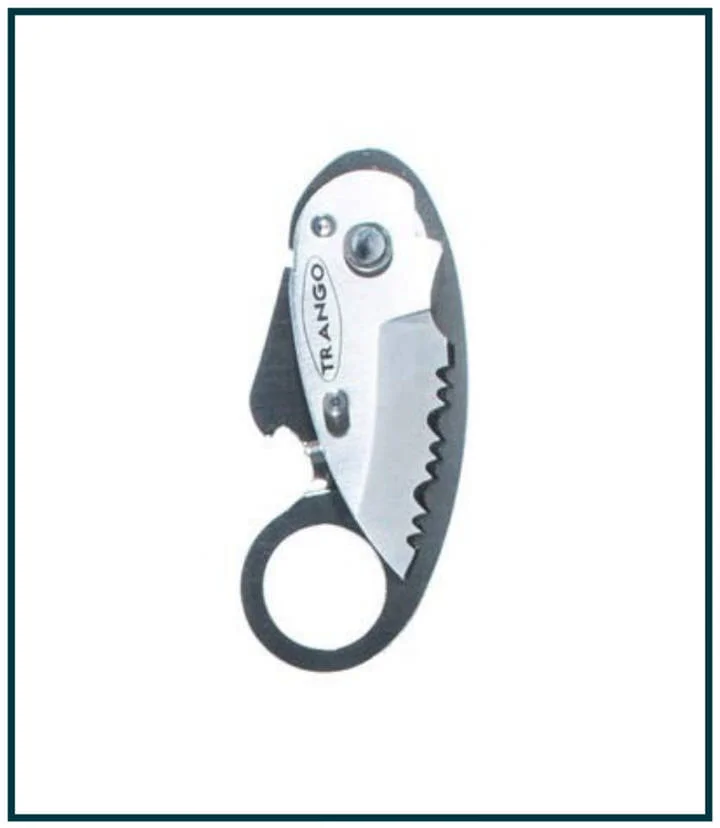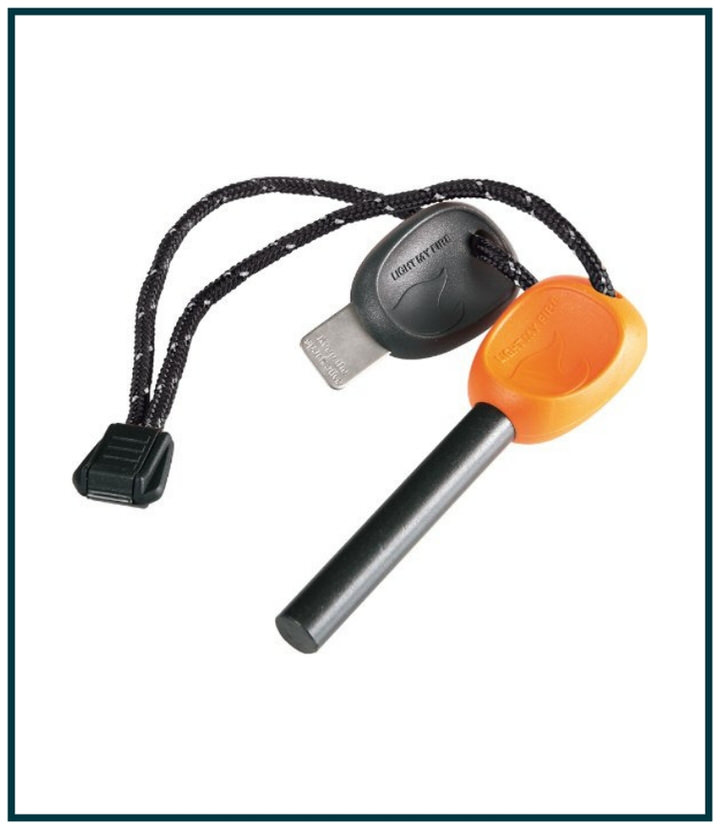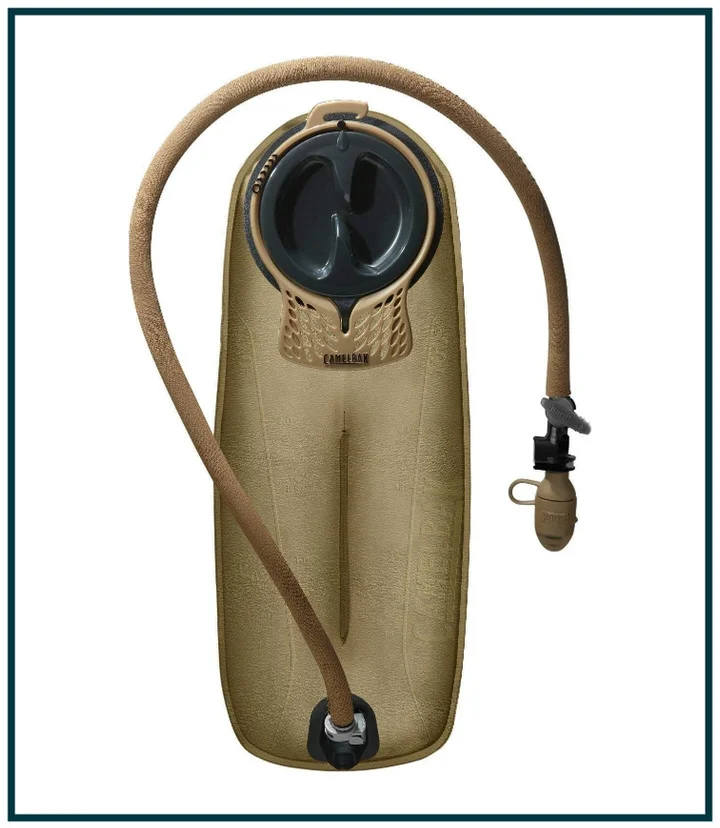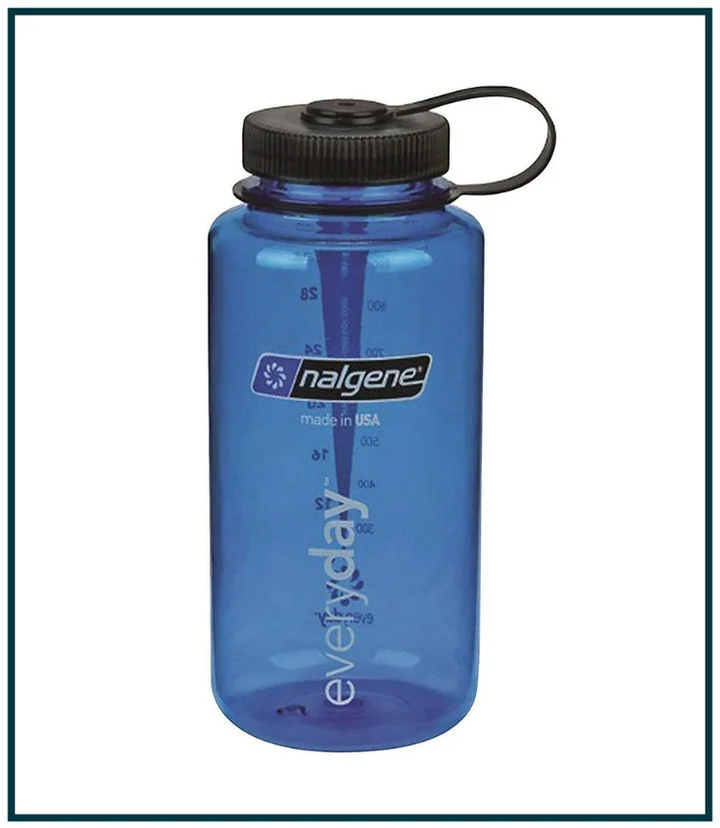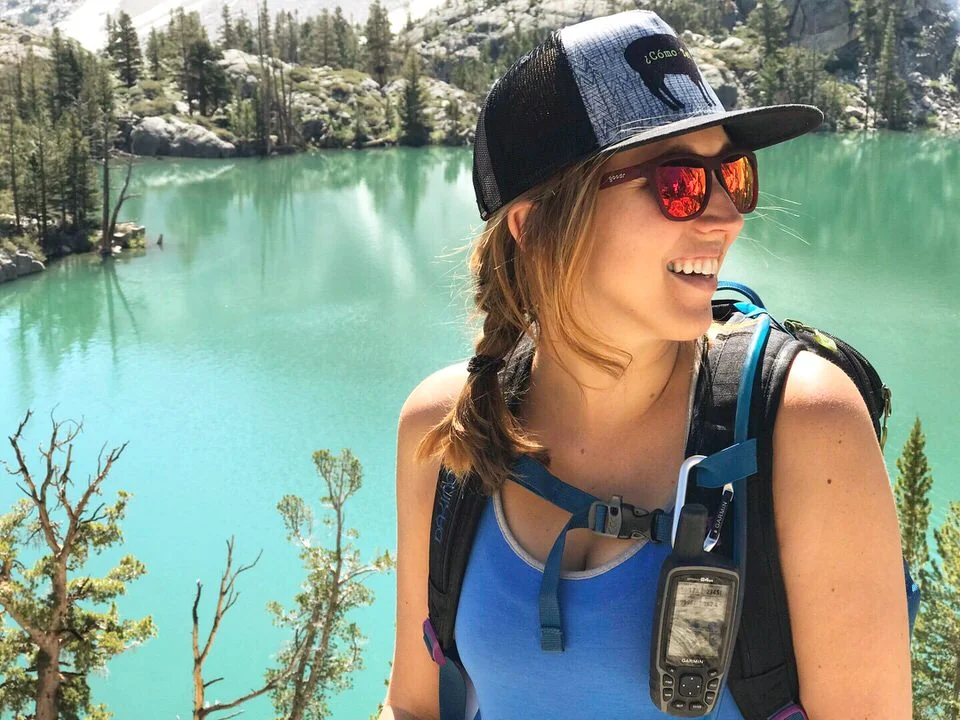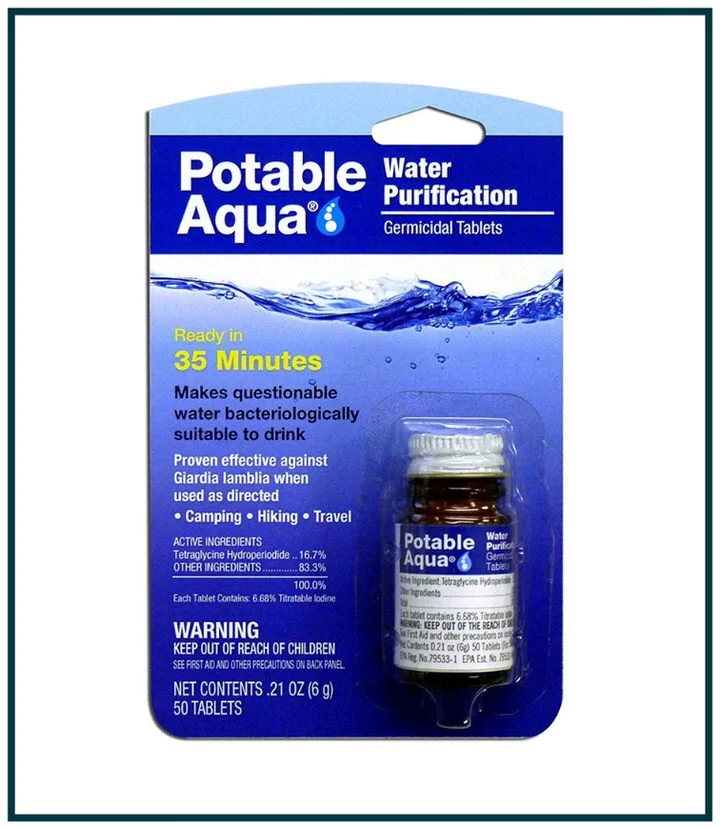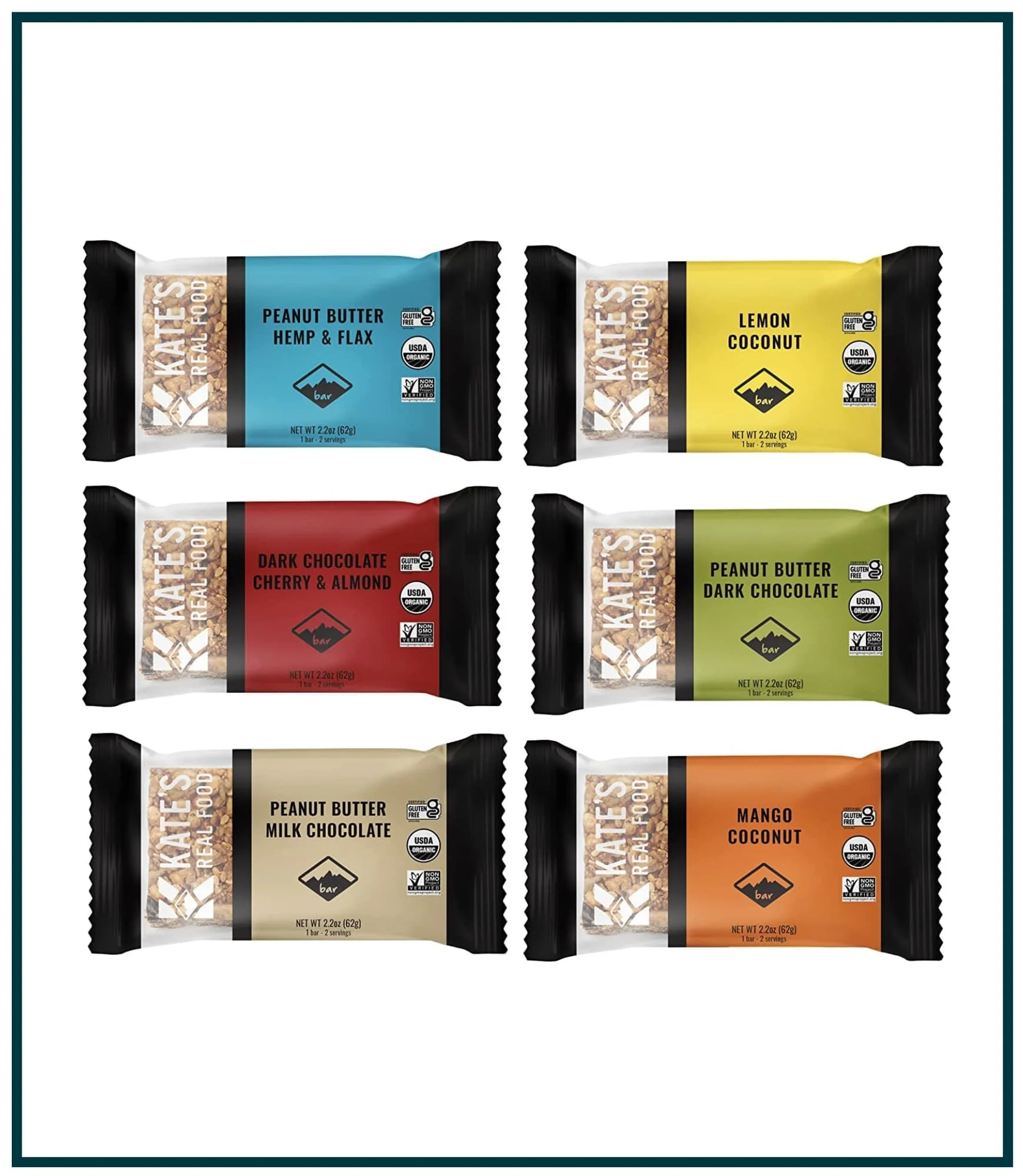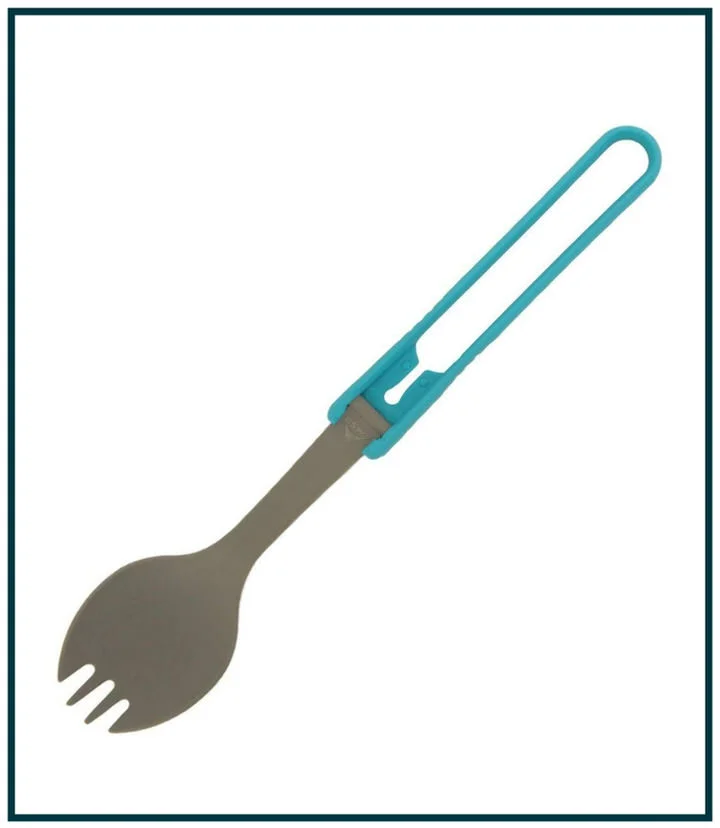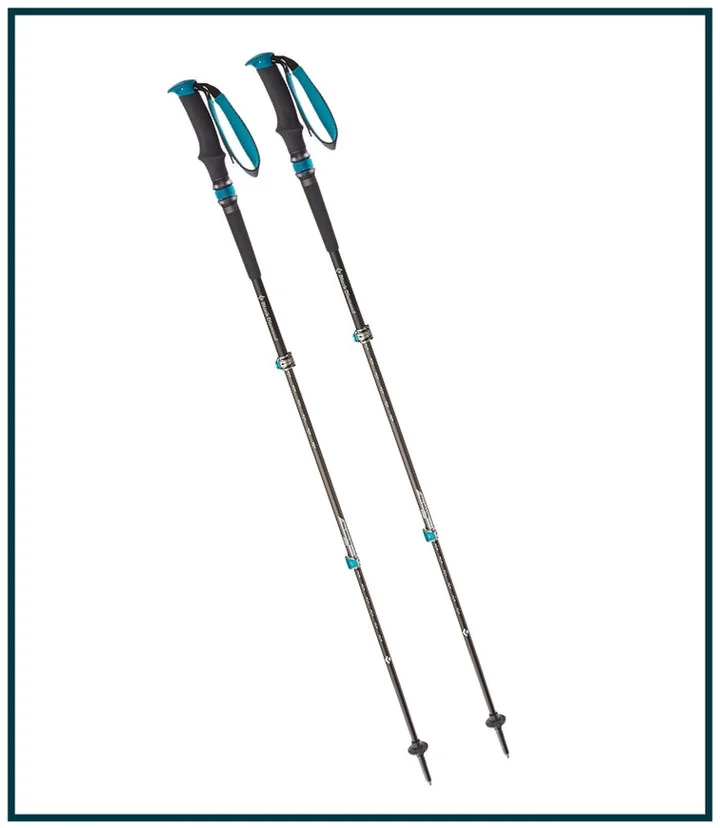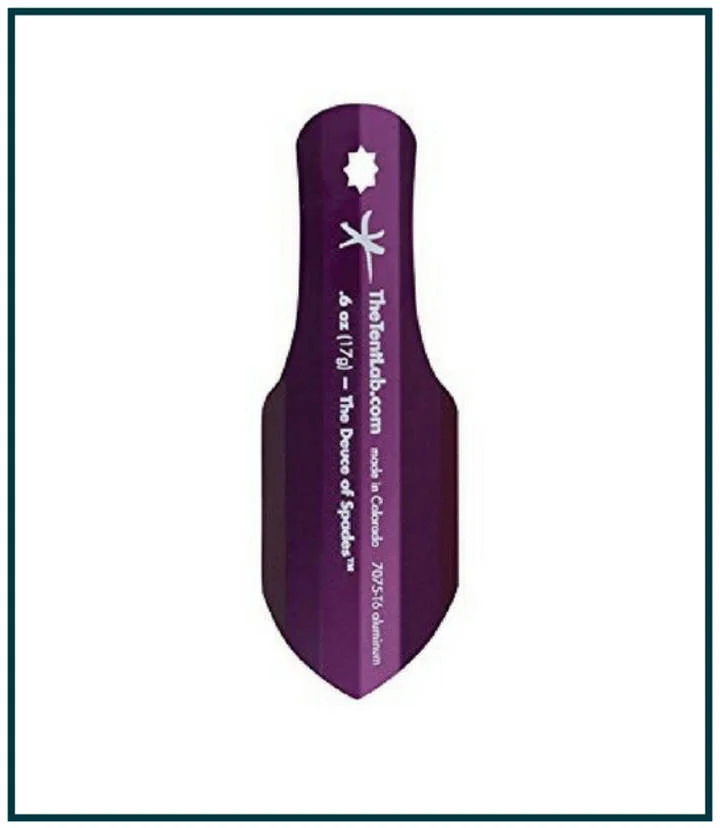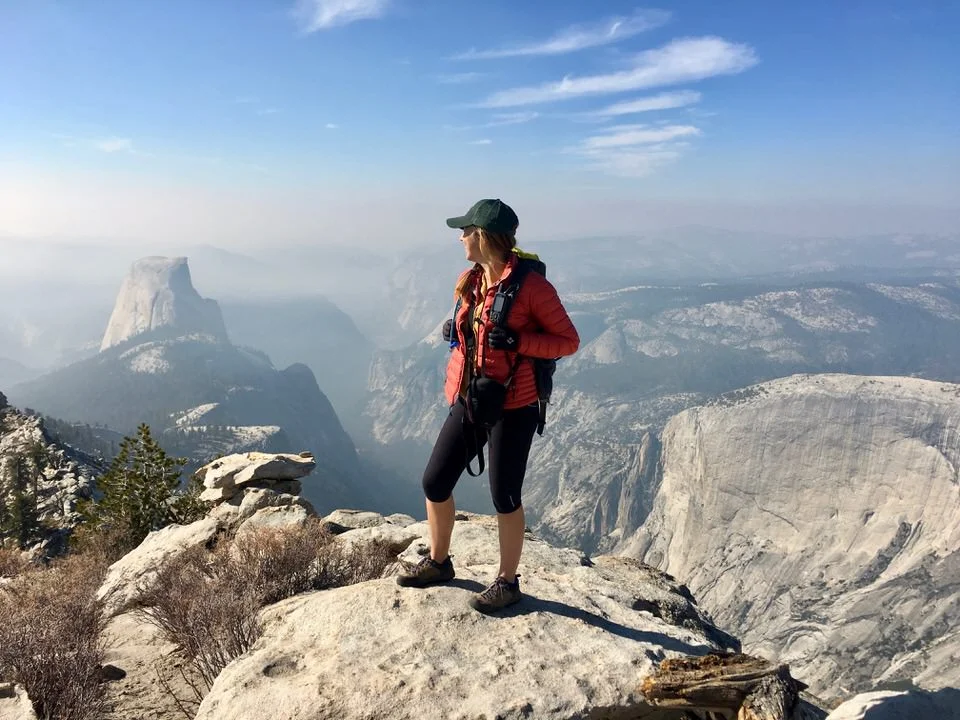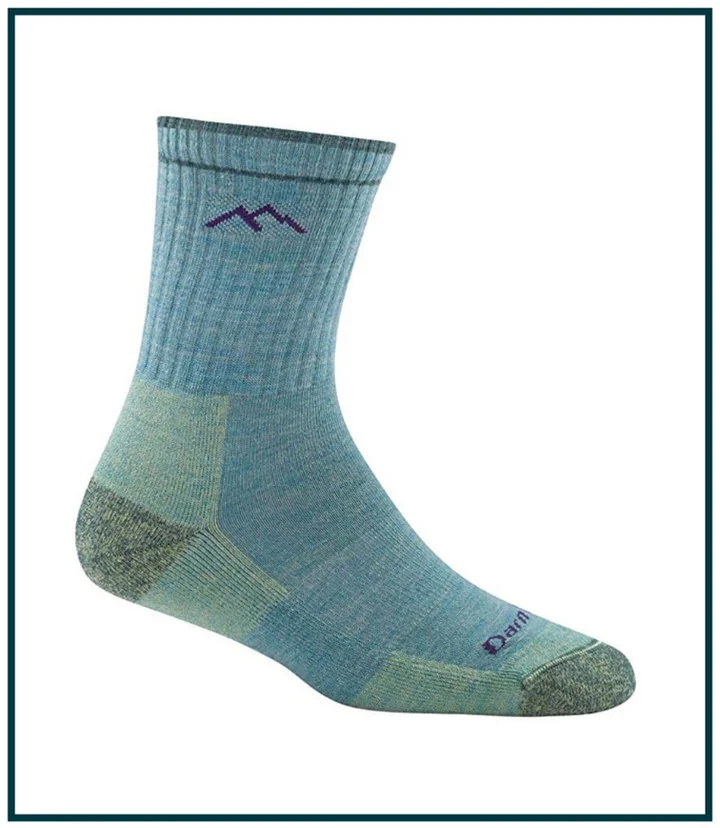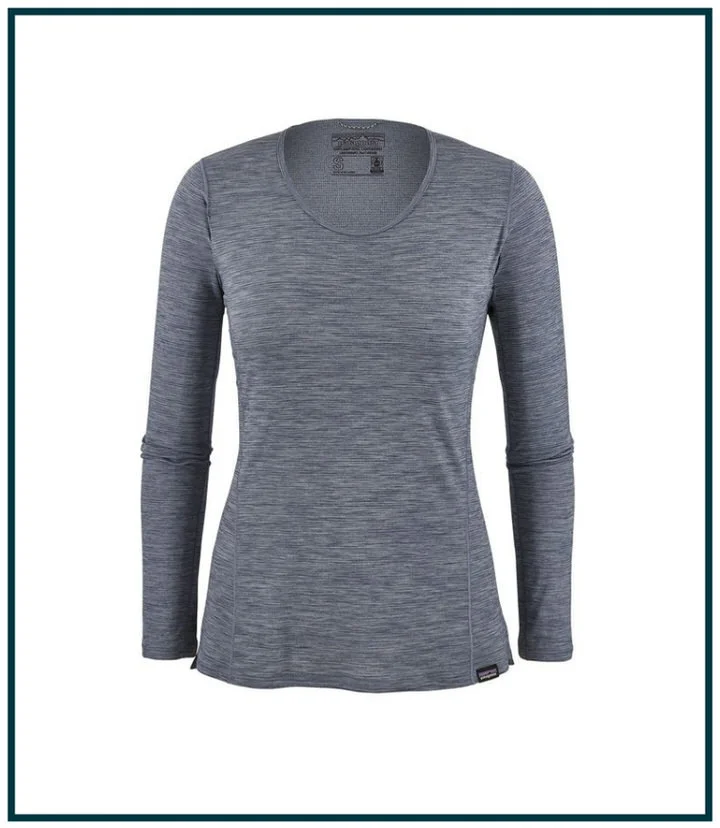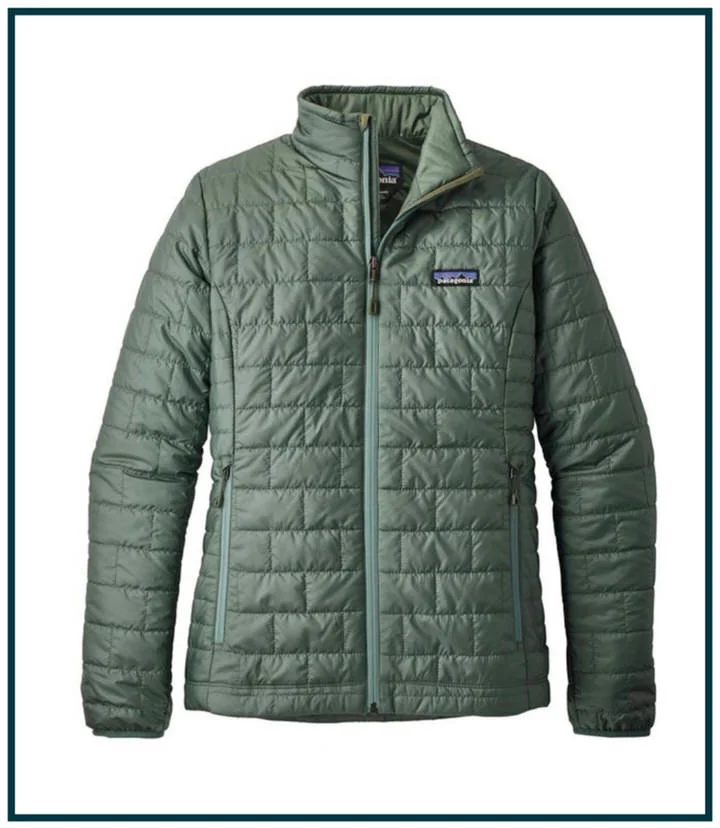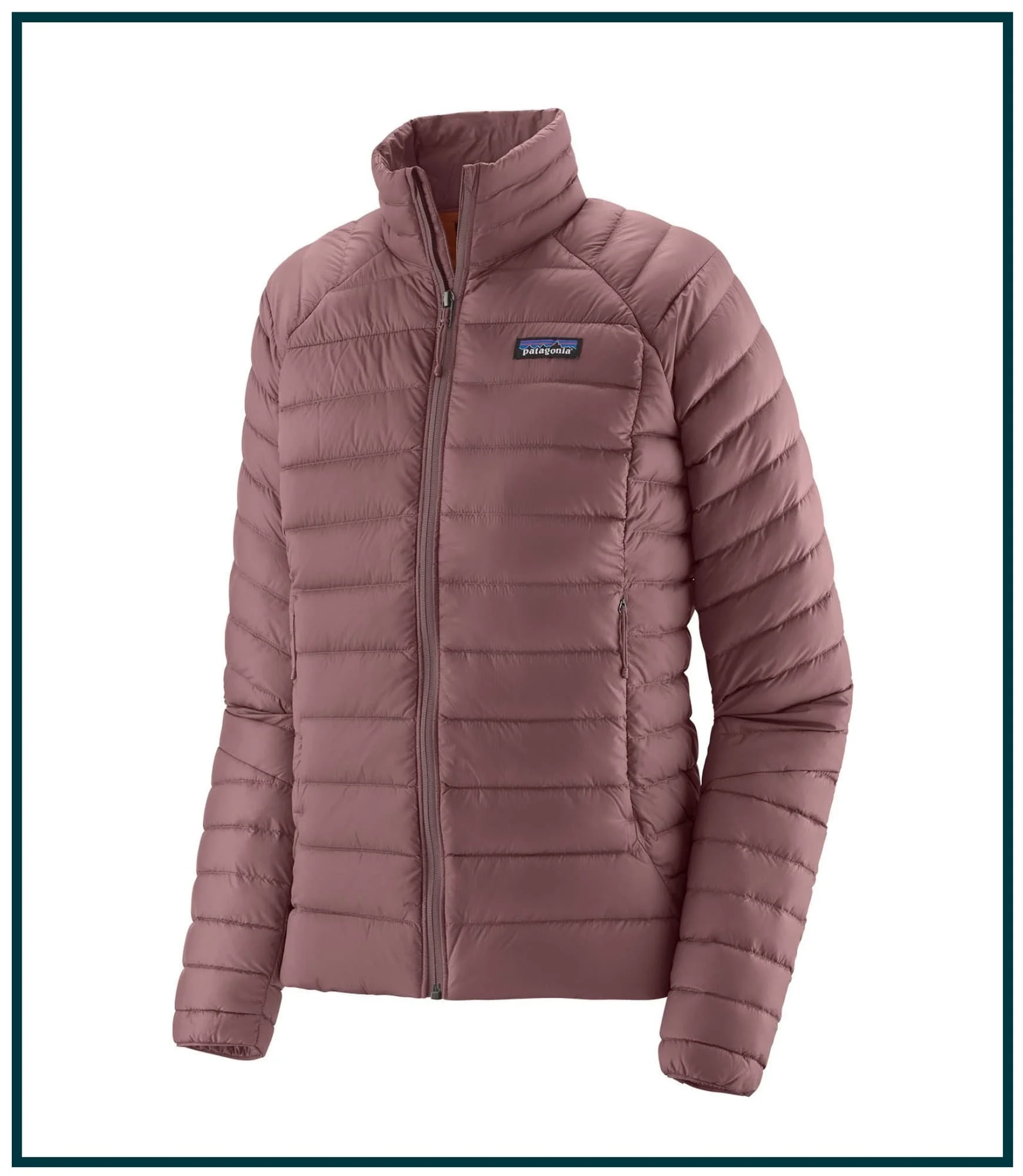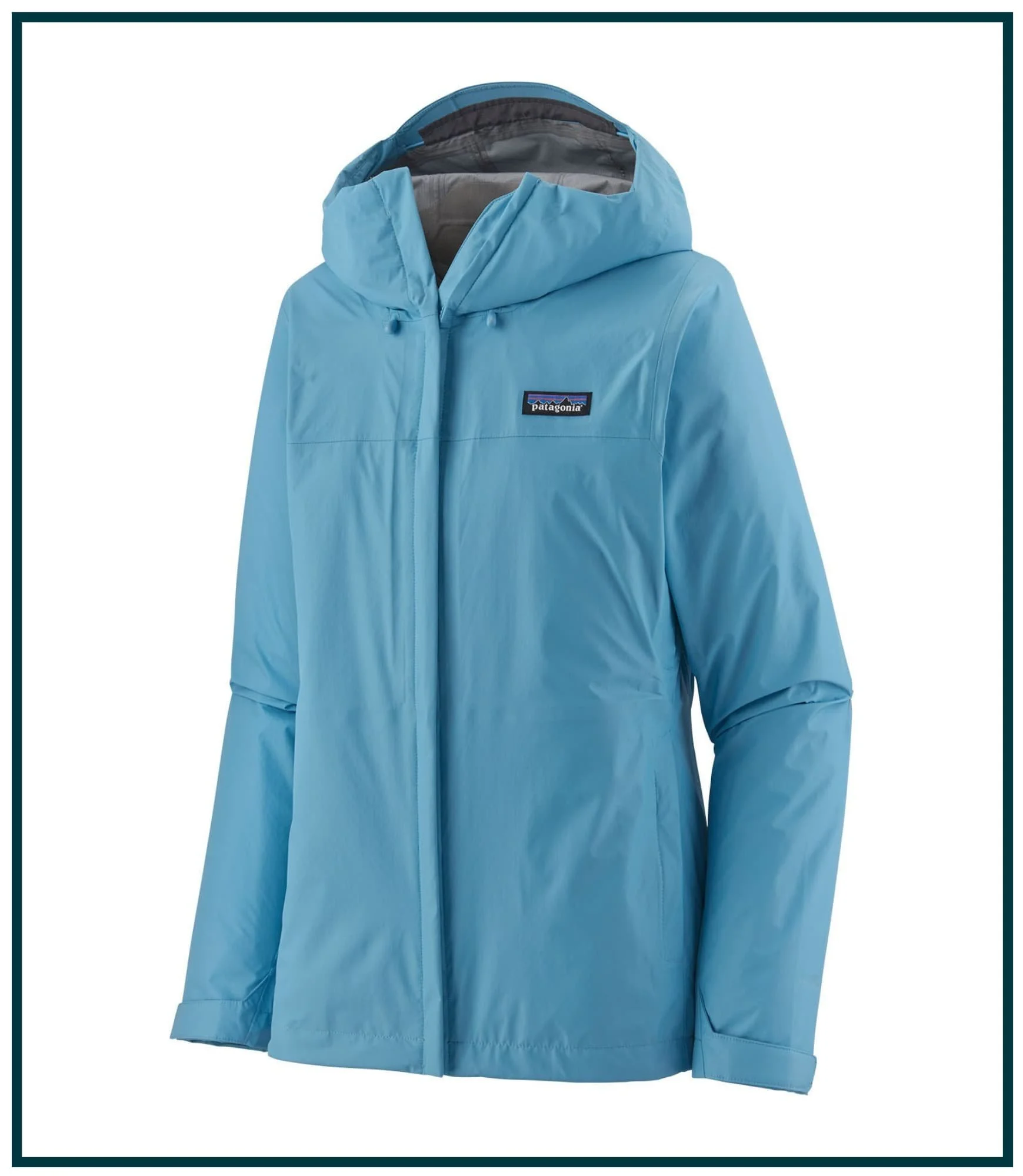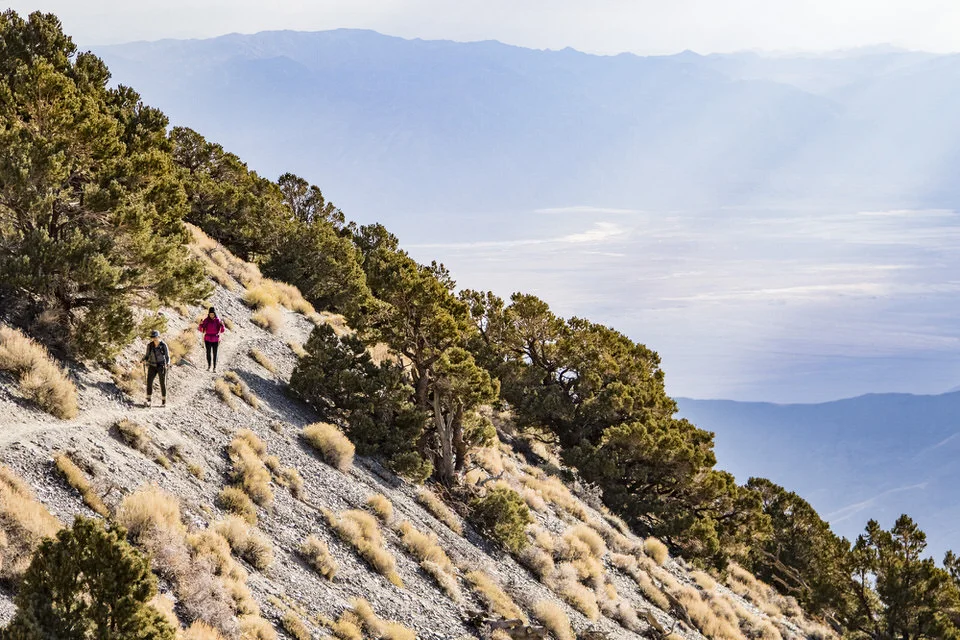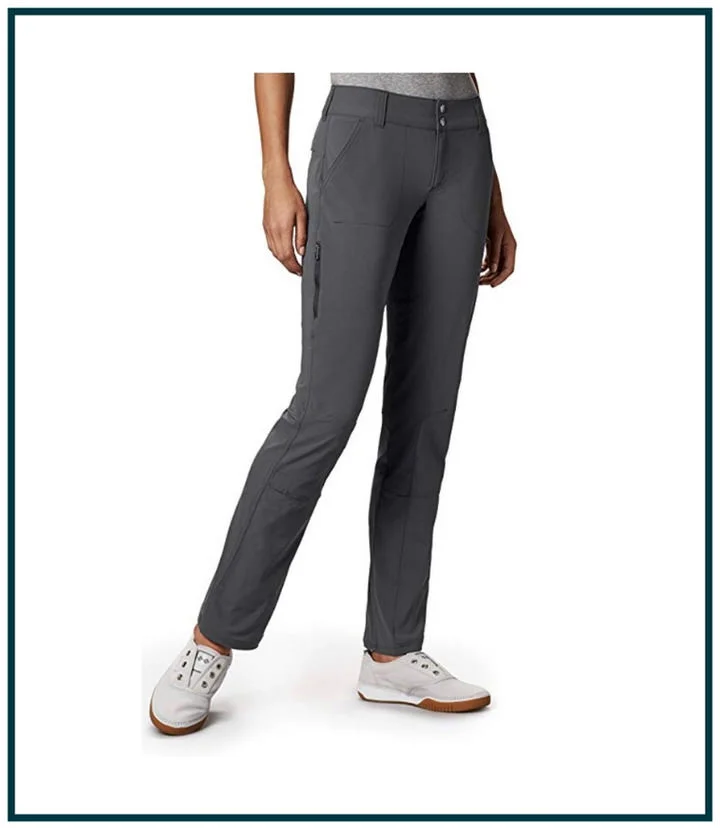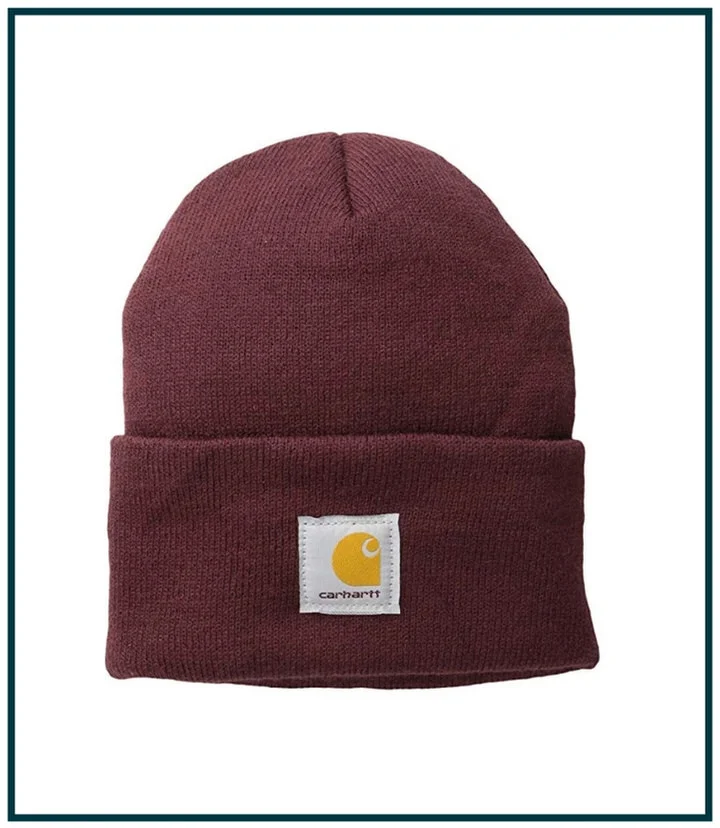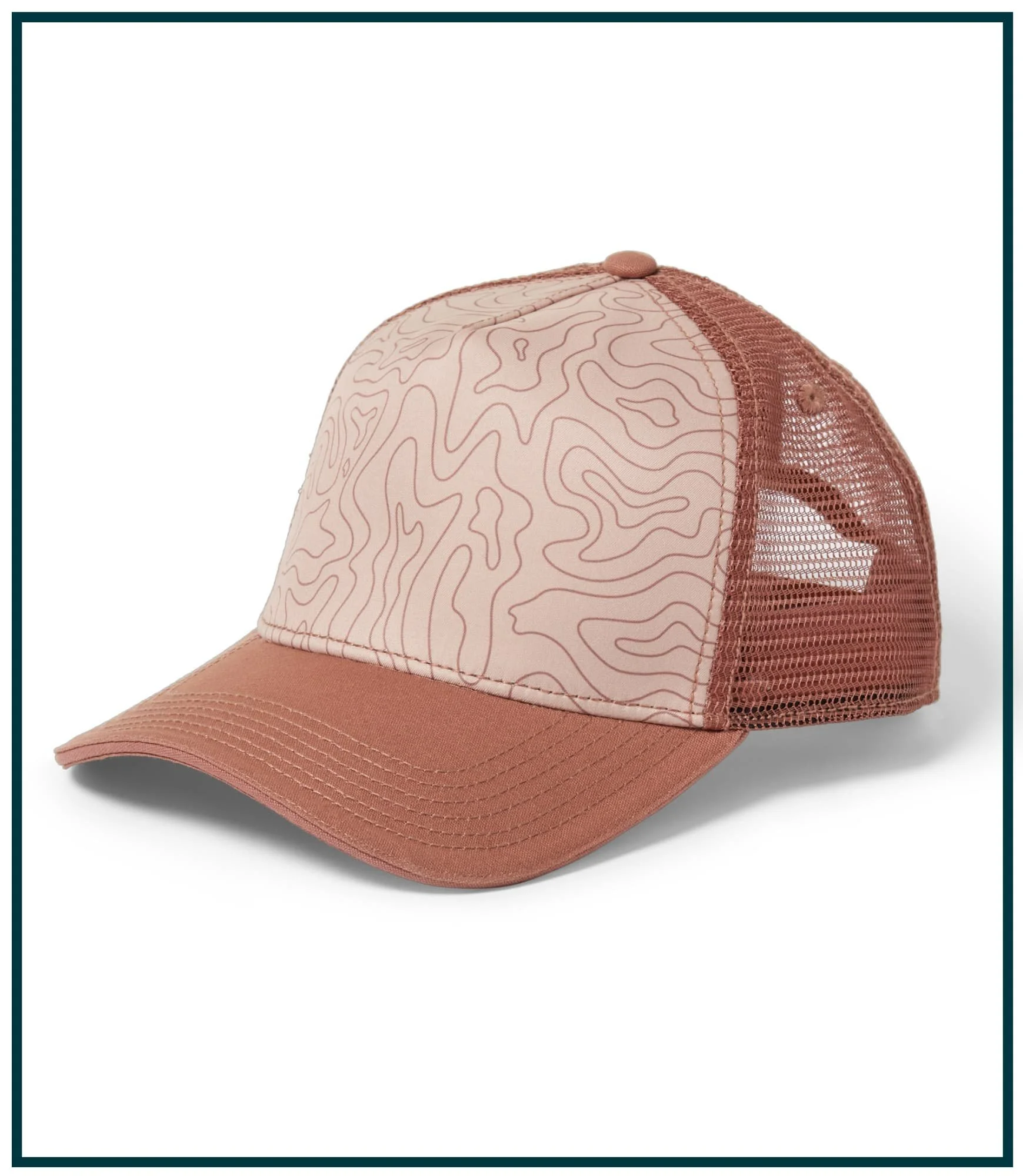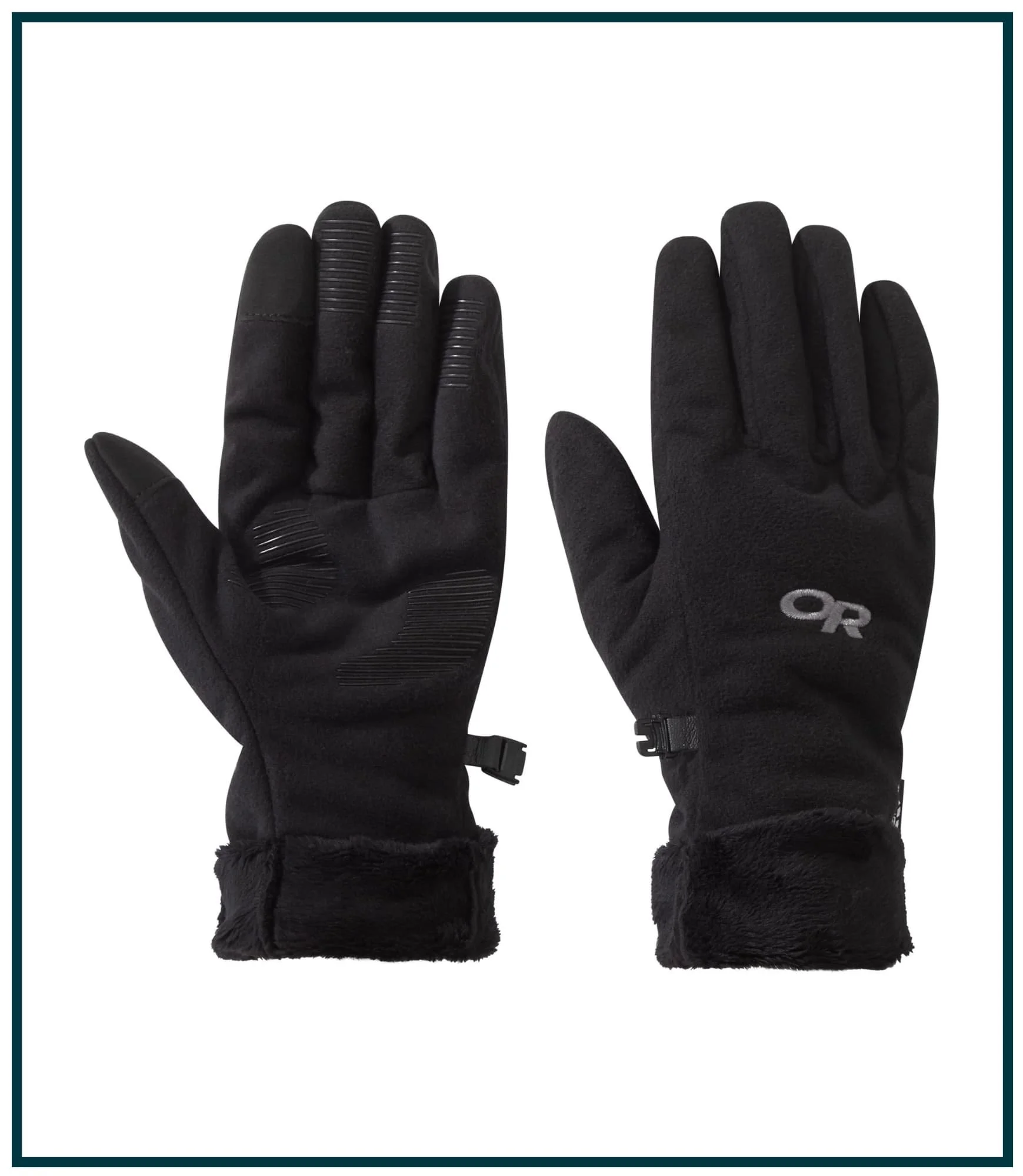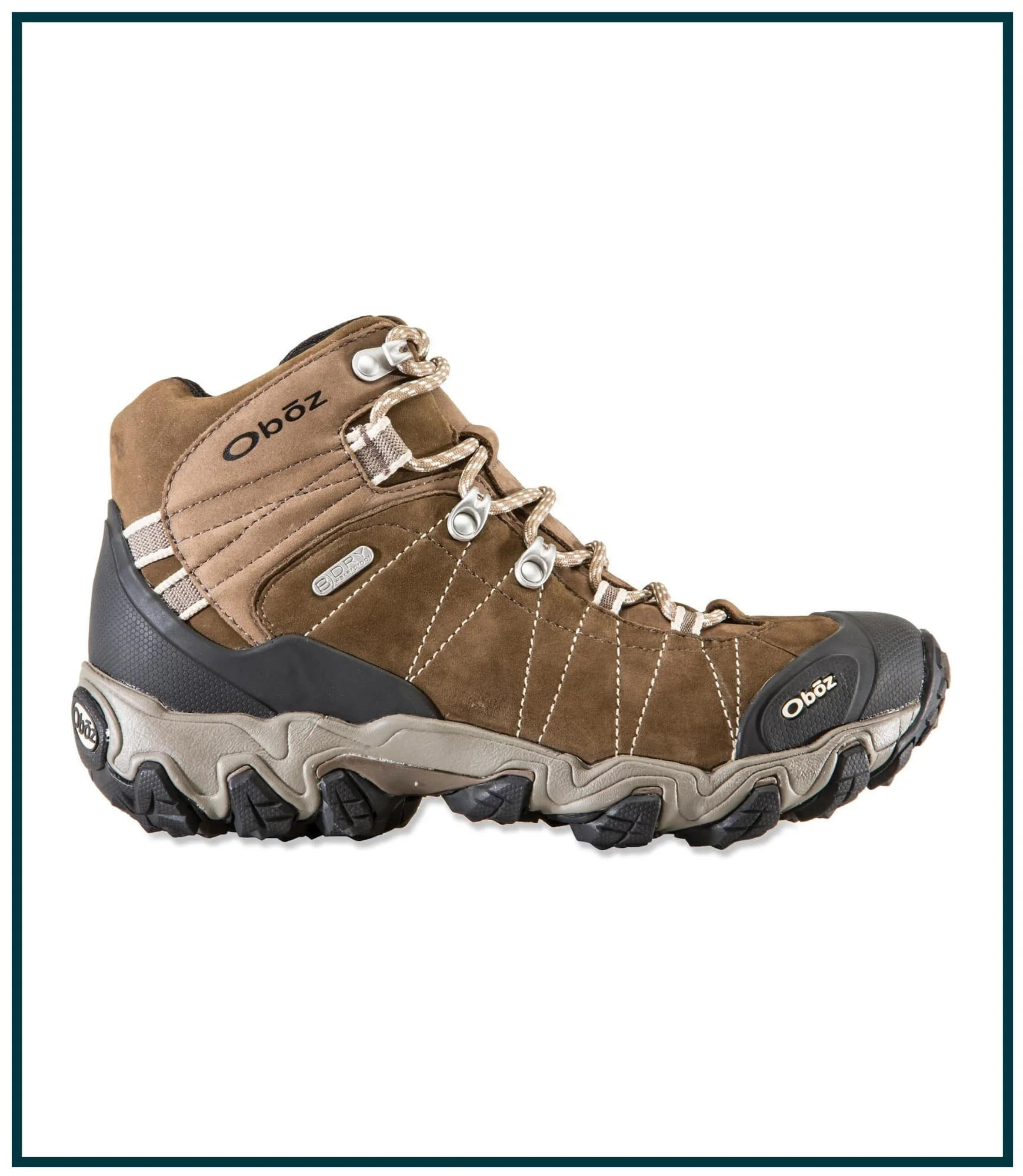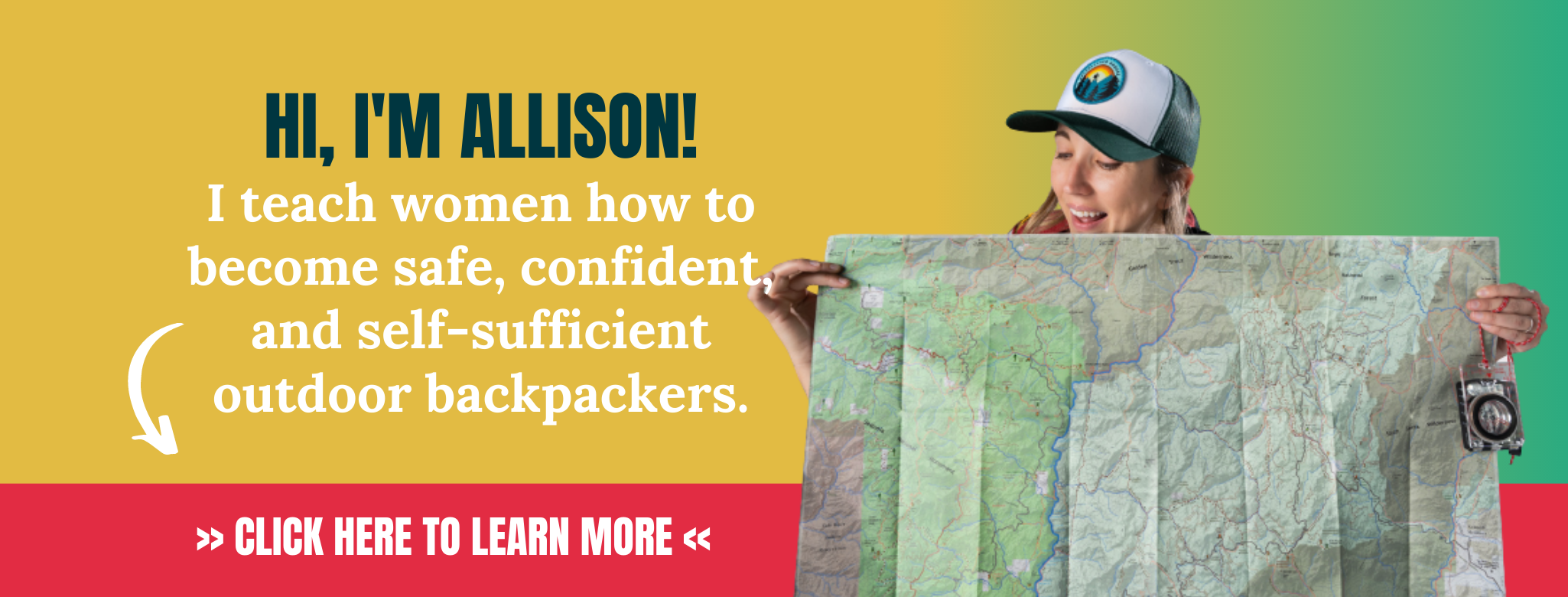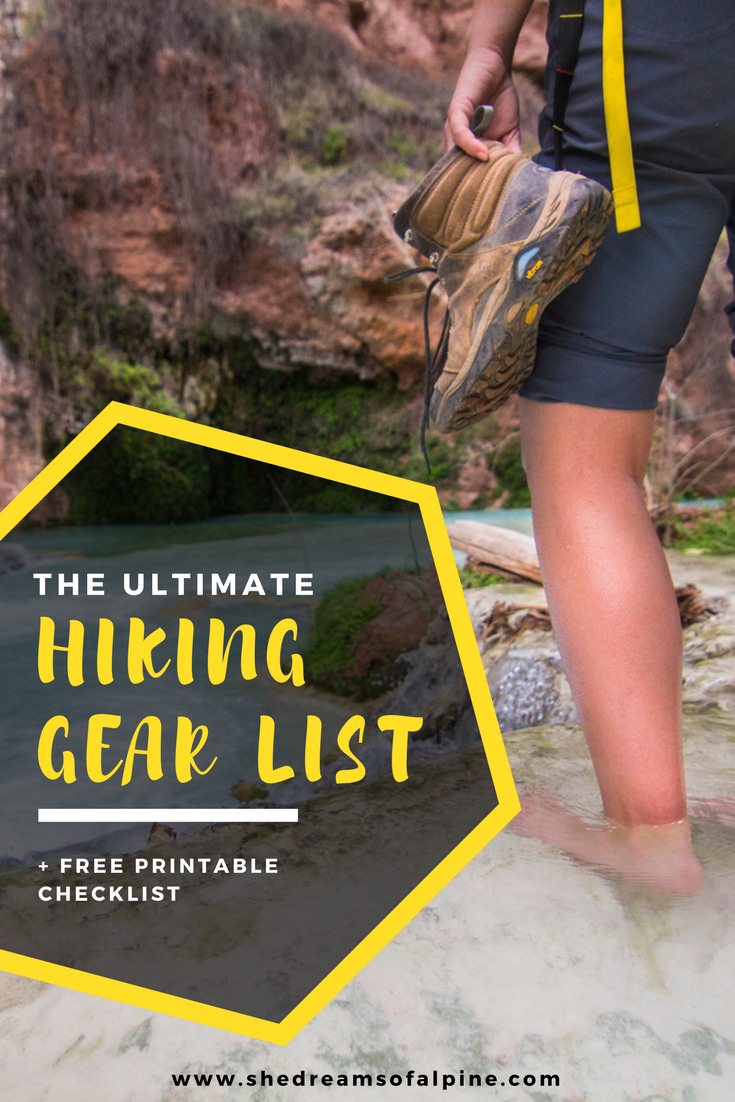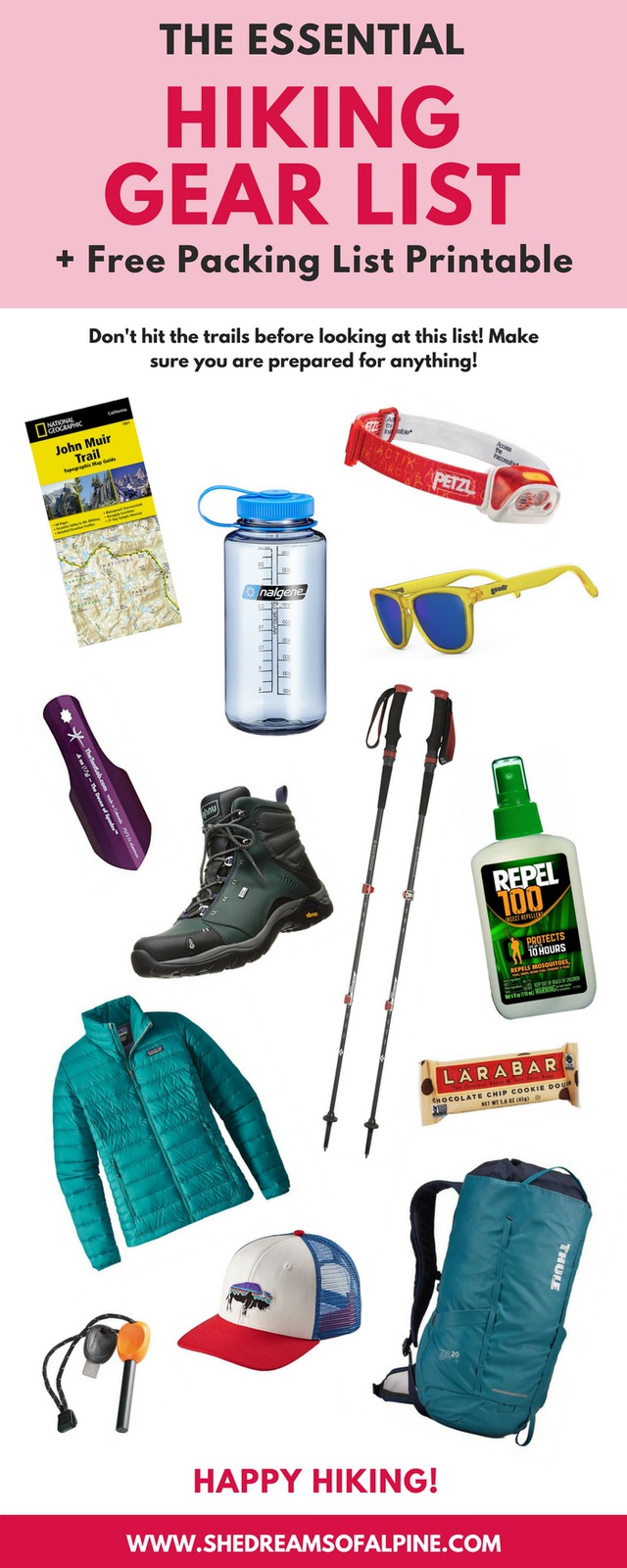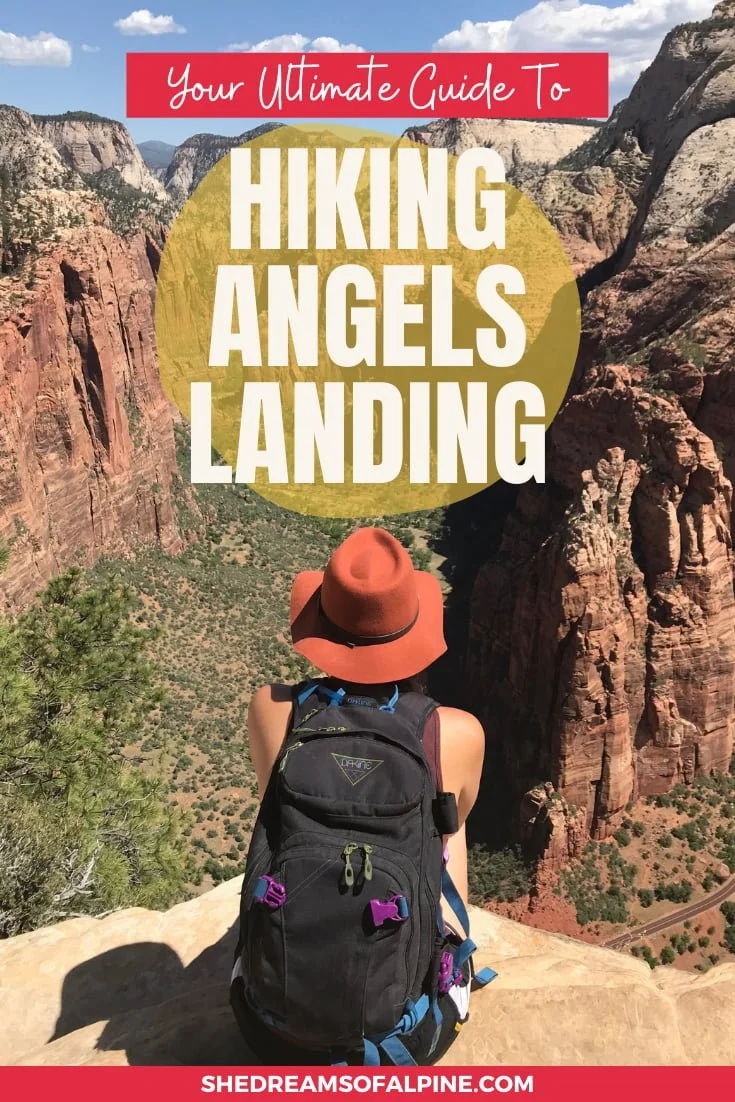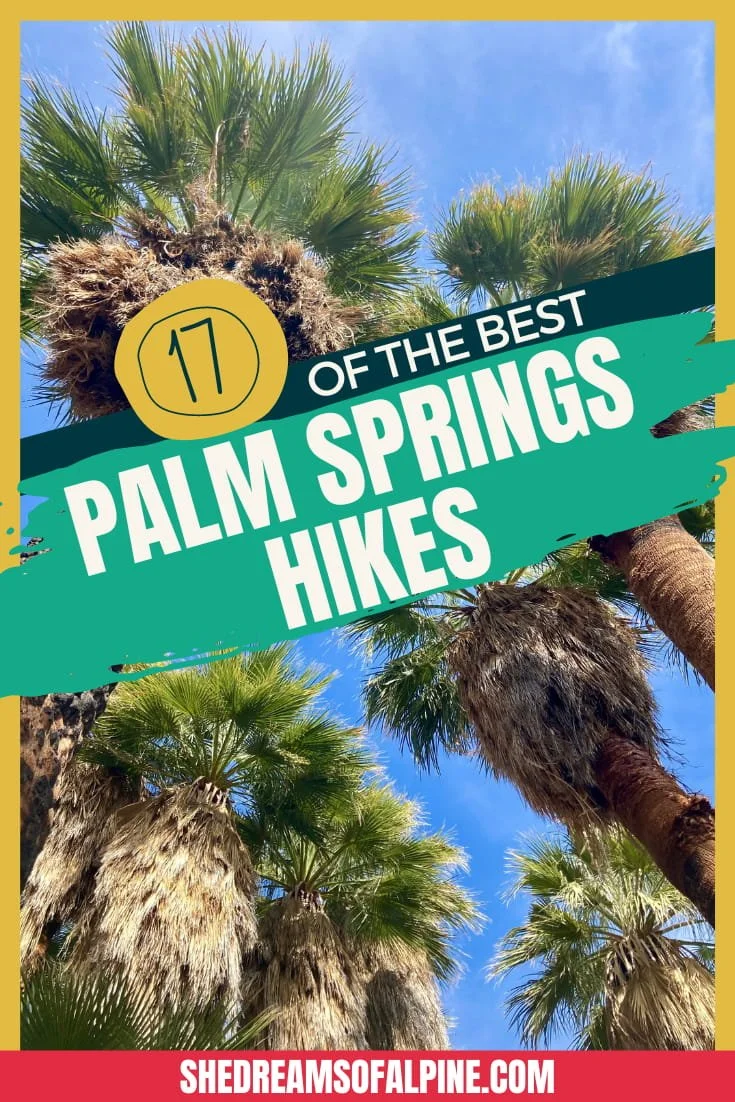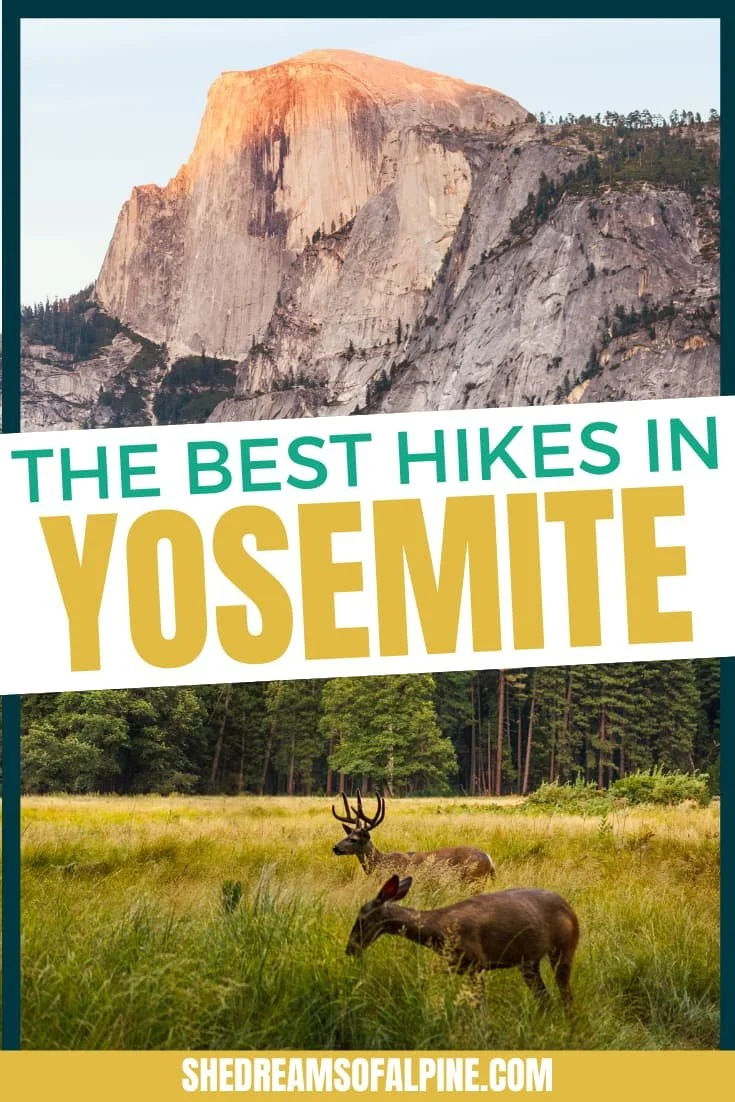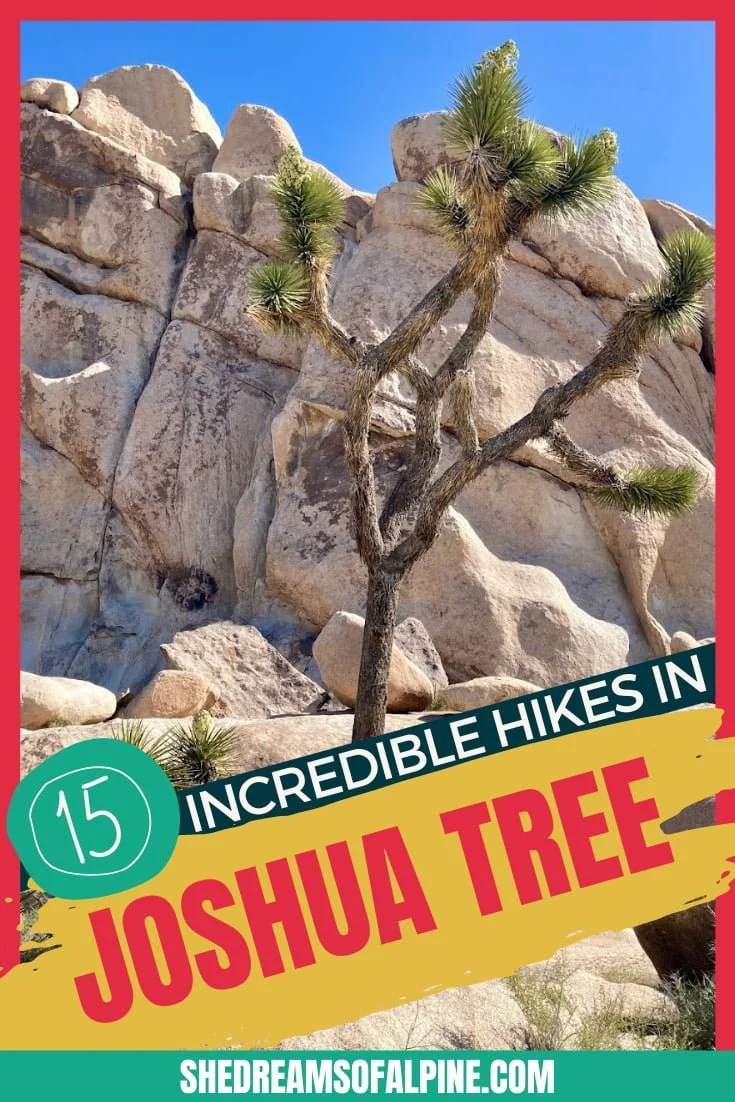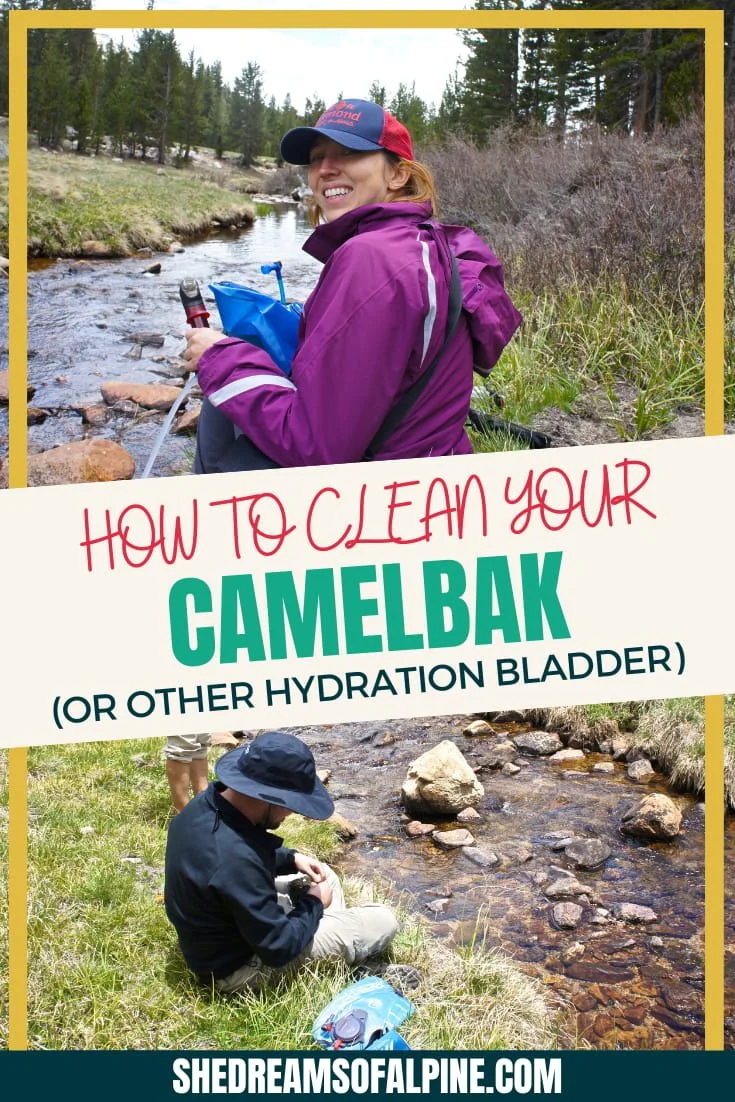Hiking 101 - The Essential Hiking Gear List for 2024 (PLUS Hiking Packing List Printable)
Let me tell you a quick story, to emphasize why it’s important to have some key safety essentials on your hiking gear list whenever you head out and hit the trails.
I was backpacking with a few friends of mine one time in Yosemite’s backcountry, and the first leg of our trip was up the very popular Half Dome route (which many people day hike). We had just completed a summit of Half Dome and were camping in Little Yosemite Valley for the evening before we ventured further into the backcountry the following day.
When we were filling up our Camelbaks with water to get a head start for the next day, we ran into a couple of day hikers making their way back down from Half Dome. The sun was starting to set, and they came up to us and asked, “Do any of you know which trail is the correct trail back down?”
I started to get a little concerned because for one, they had no headlamps and it was almost dark (they were using their phone for lighting), and two, they didn’t seem prepared with any sort of map or GPS or way to find their whereabouts on the trail. They also had no jackets, and in the mountains, it can go from warm to very cold very quickly after the sun sets.
So their fun Half Dome day hike could have gone from good to bad in an instant, simply because they didn’t come prepared with the essential hiking gear for their worst case scenario - which for them was that the hike took them much longer than anticipated.
Luckily, they decided to wait it out at the campground (with the help and supplies of strangers camping there) instead of risking it and wandering down the trail at night. But I guarantee you that wasn’t part of their Half Dome hiking plan.
Look, hiking doesn’t need to be overwhelming, but I am a big fan of being prepared for the worst case scenario. In fact, I teach my students inside of my backpacking program, Become an Outdoor Backpacking Badass, specifically how to be self-sufficient and confident in their own skills outdoors so they can actually take some REAL OWNERSHIP of their safety… instead of always leaving it to chance or hoping others will help them out.
Often, I am doing new day hikes on my own, or maybe I’m going on a new hike in unfamiliar territory. No matter what, I always refer to my hiking packing list to make sure I grab what I consider “essentials” for hiking.
Some of these day hiking essentials are more important if the hike is new for you or if it’s a longer distance day hike and may not be necessary if it is a hike you do often or is shorter in distance. Use your best judgement, but refer to the hiking gear list each time to get in the habit of never forgetting anything essential.
In the post below, I go through my complete hiking gear list with examples of brands I trust and love for my own hiking gear. Also, be sure to download my day hike checklist and print it off so that you never forget the essentials again!
Are You More of a Visual Learner?
This post is great and filled with a ton of details for building out your perfect hiking gear list, but I know that sometimes it’s nice to visually see what other people’s gear looks like in real life. So I created this short video for you to get a behind the scenes look at my personal day hiking gear.
It won’t be a surprise to you then to see that what I recommend below, I also keep in my own hiking gear arsenal. Once you finish watching this video, dive into the list below for more details!
Essential Hiking Gear List
This hiking supplies list is filled with all my own personal recommendations for day hiking gear. I can vouch for all the items listed, so please feel free to leave me a comment if you have any follow up questions.
If you’re just starting to buy your essential hiking gear, definitely check out the benefits of REI membership to help you save money and try out gear thanks to their generous return policy.
Note: The list below may contain affiliate links.
Day Hiking Backpack
This is an obvious day hike essential, and there are all kinds of great, small day hiking backpacks out there. Look around the market and see what works best for you.
For day hiking, I usually like to have a bag that is about 20-30 liters, has space for a Camelbak-type water bladder, and has hip straps and chest straps.
Michael’s Day Hiking Backpack Favorite: Thule Stir 20L
Hiking Map
I always like to have a map of some kind with me, whether I print one out from online or buy one for my specific trail.
Many trails have forks and split off in different directions, so it’s good to have something to ground yourself with.
I once had to use my map to help me get out of pickle when I was hiking Mount Langley (a California 14,000 foot peak). My map helped me find a connecting trail so I could save tons of time (and miles) to get to a pass that wasn’t covered in snow.
Hiking GPS Device
I’m a data nerd, and you should be, too! I know many people don’t utilize GPS when they hike, but I consider it an essential piece of gear, and there are many great options.
My favorite GPS is the Garmin GPS 64st. It has definitely come in handy to help me navigate when I wasn't sure where I was. The first solo hike I did, it helped me navigate through a big talus field back to the main trail when I got off route.
I've even built my own GPX file on Google Earth and downloaded it to this GPS so my friend and I could follow a less traveled route called Bastards Ridge. Read more below on why I think every hiker should learn to love their GPS:
Don’t have a GPS? You Should.
I believe every hiker and backpacker should strive to be self-sufficient, and that includes knowing how to practice smart navigational skills in the outdoors.
This is an important safety skill set that I teach in-depth inside of my backpacking program. There’s no reason to risk getting lost in the outdoors.
Here’s what I recommend to get started:
(Note: This list contains affiliate links)
Gaia is offering a special 20% discount on a premium account to those who subscribe online through my link.
Don’t know where to start? If you need help with some Gaia GPS basics, download my quick Gaia GPS navigation 101 guide.
2) Get an SOS Device: Once you are able to, I recommend investing in some sort of SOS communication device like the Garmin inReach Mini or the Garmin inReach Explorer+ . These devices provide not only GPS tracking capabilities, but also an SOS satellite search and rescue communicator and text communication abilities in the backcountry.
My Go-To Trail Setup: The Gaia GPS app (premium subscription) + the Garmin inReach Mini.
Alternative to Garmin: Pair your Gaia GPS App with the Zoleo SOS device . With this set up, the Gaia GPS App serves as your GPS navigation device, and the Zoleo serves as an SOS/communication device.
Learn more about the best GPS devices for hiking here.
Basic Hiking Navigation Compass
I’ll be honest, I rarely have to use my compass (I’m usually just using it for fun), but I do always bring one just in case. I consider this my 3rd line of defense in case I get lost for some reason.
If you don’t know how to use a compass, also consider doing some training to learn how to use it in the backcountry. If you don’t actually know how to use it, it’s not going to help you even if you bring it! This is something I teach my students in Become an Outdoor Backpacking Badass.
Another Great Compass Option (Slightly more affordable): Brunton - TruArc 3
Sunscreen
This should be a no-brainer, but always wear and bring sunscreen for a hike. I really like the Neutrogena brand. They also have a zinc based sunscreen if you are looking for something more natural.
Lip Balm (with SPF!)
Just like sunscreen, it is also important to bring lip balm that has sunscreen in it on your hike. My favorite lip balm is the Joshua Tree brand.
Bug Spray or Wipes
I don’t always bring this, unless I know there are going to be issues with bugs and mosquitos. In the Sierra Nevada, bugs can really be an issue during the summer months, so that’s when I tend to bring bug repellent wipes.
If you’re hiking in warmer weather, it’s always a good idea to bring insect repellent just in case. I prefer the wipes for hiking and backpacking because they are lighter and easier to pack (no worries about spilling!).
Sunglasses
It’s sometimes easy to forget that our eyes need sun protection, too! Always remember to have a pair of sunglasses on hand to bring on a day hike.
My favorite pair for day hikes are Goodr Sunglasses. I originally bought these glasses when I got into trail running. I couldn't find a pair of glasses that were comfortable and would stay on my face when I was running. These finally did the trick, and now I love wearing them hiking too! They come in a bunch of great color options and the best part... they are only $25!
Headlamp (+ Extra Batteries)
You might be thinking, “Why do I need a headlamp on my hiking gear checklist”? Well, you hopefully won’t need it… but what if you get lost? What if your day hike takes longer than expected? I always pack my headlamp AND extra set of batteries.
I pretty much don’t go anywhere without a headlamp. I have a Petzl headlamp, and it has been going strong for over 3 years now.
And It's always good to pack an extra set of batteries as well whenever you hike or backpack. I keep an extra set of batteries in a ziplock next to my headlamp and grab both whenever I pack for a hike. Most headlamps I've used take AAA batteries.
You can also get rechargeable headlamps, but just make sure to charge them ahead of time (and bring a portable charger to recharge them!
Small Utility Knife
I don’t always bring a knife, but when I do, I bring my really lightweight knife, the Trango Piranha. It weighs almost nothing, but can cut through just about anything! I usually throw this into my pack wherever I go. You never know if you might need a knife in an emergency… so you might as well add it to your hiking checklist.
Hiking First Aid Kit
Another nice item to have on your hiking trip packing list is a small first aid kit. Adventure Medical Kits contain first aid essentials that you can just throw in your pack . Better safe than sorry!
Waterproof Fire Starter
A maybe not so obvious piece of gear for hiking is a waterproof fire starter, and it’s worth bringing with you for emergencies!
When I first started mountaineering, I was told to buy a Light My Fire fire starter in case my JetBoil igniter stopped working or I needed an emergency fire. This is the best tool out there because you don't have to worry about it getting wet, it can be used for up to 12,000 strikes, and it is super light weight. It’s just another one of those small items I always bring with me.
Hiking Water Reservoir
Camelbaks are awesome for hiking! They are the easiest way to stay hydrated, and I always bring one with me (unless it is really cold out because your water can freeze inside the hose).
I recommend getting one that has at least a 3 liter reservoir – you don’t always have to completely fill it, but it’s nice to have the option. The ones with a mouth piece cover are awesome too because you don't have to worry about your mouth piece getting all dirty when you set your backpack on the ground.
Durable Water Bottle
Ok cool, you have a Camelbak, but if your hike is long enough and water is important enough, consider bringing a Nalgene for backup as well. I’ve included both on your day hike packing list download.
I've had friends who had their Camelbaks start leaking part way into a hike (although, it's never happened to me personally), so if my hike is long enough (over 5 miles), or if it is really hot out, I will usually pack an empty Nalgene as backup. Then, if a leak develops in my Camelbak, I can at least transfer water to the Nalgene and still be OK.
Emergency Water Filter
I wouldn't say water filters are always necessary to pack for a day hike, but I do sometimes pack a small one if I am doing a really long day hike (12+ miles) or if I am going somewhere really remote and where I haven't hiked before.
But it’s always a best practice to throw some potable aqua tablets into your “emergency” day hiking gear kit, even if you never anticipate needing them.
In my backpacking packing checklist you can read more about the kind of water filters I recommend, but for the purposes of day hiking gear, I’ll just recommend having some potable aqua tablets in your safety kit.
Food and Snacks
This seems obvious, but always pack food and snacks! And pack what works for you – some people like bars, some like sandwiches, there are no real rules except that it should be something you’ll actually eat on the trail.
I like to pack different bars for quick snacks. Sometimes I will make a little quinoa and veggie lunch or a PB&J sandwich if its going to be a longer hike. It really just depends on how much time I have to prepare in advance.
Spork
You only need to pack a spork for hiking if you bring food that requires one, but I always keep it on my hiking equipment list as a reminder. I can't tell you how many times I've packed a quinoa or rice lunch and forgotten utensils, so I end up eating with my hands! Don't be like me. :)
Hiking Trekking Poles
Trekking poles should really be an essential piece of basic hiking gear, and I love the Black Diamond Trail Pro Shock trekking poles.
Michael and I both have these. I've owned a pair of cheaper trekking poles in the past, and they broke fairly easily, but these Black Diamond ones are almost indestructible. I've been using the same pair for almost 5 years now, and they’re still going strong.
Toilet Paper or Biodegradable Wipes
Toiletries are one of those things that are easy to forget to take hiking. So try to remember to grab a wad of toilet paper or a pack of wipes just in case nature calls while you're on your nature hike! I've been using these biodegradable wipes recently and love them! Of course, I pack out any wipes that I use, but I still like to buy products that are more sustainable.
Speaking of sustainable… there’s no better way to save on waste than to avoid it altogether! That’s why I’ve started using a Kula Cloth – and absolutely loving it! The Kula Cloth is a pee rag for your #1 business. Simply do your business then use the cloth to wipe instead of toilet paper.
Then attach the cloth to your pack and let it dry in the sun. The sun and anti-microbial fabric work together to keep the cloth clean.
To read more about outdoor hygiene (especially for us women), check out my Essential Hygiene Tips & Feminine Care in the Outdoors Blog Post.
Pee Rag: The Kula Cloth! To use instead of wasting toilet paper (#1 business only!)
Trowel
Nobody likes to talk about it, but to be a responsible outdoorsman/woman you need to bury your human waste. The Deuce of Spades Trowel is a fantastic lightweight option. When I went backpacking with my friends in Tuolumne , all of my friend's trowel handles broke except for mine! Winning!
Camera
Don't forget to pack a camera or a phone to capture your hike! You can read our post on Outdoor Adventure Photography Gear if you want details on the cameras we recommend for outdoor photography, but you also can't go wrong these days with your phone camera. Your choice!
Rain Pack Cover or Trash Bag
For day hikes, I don't worry about this too much unless there is some uncertainty in the forecast. You can get a little rain pack cover for you bag or just use a trash bag. It’s cheap and does the job for a day hike!
Printed Hiking Permit
If your trail requires a permit, make sure to print it out or pick it up from the ranger station before your hike!
GRAB MY [FREE] OUTDOOR BACKPACKER STARTER KIT
I created the Ultimate Outdoor Backpacker Starter Kit for you (and it's FREE)! This starter kit is filled with 14 pages of my best hiking and backpacking tips to help you learn what it takes to become a safe, confident, and self-sufficient outdoor backpacker!
Essential Hiking Clothing Layers
Another important thing to consider when you go hiking is what to wear and what other clothing to bring in case you need it. You should think of layers as an essential component to your overall hiking outfit, and there are also a few clothing hiking accessories you might want to bring depending on the weather conditions.
For even more in-depth info about hiking clothing, check out my What to Wear Hiking guide.
Wool Socks (2 pairs)
Why are socks important? Having dry feet is one of the key ways to prevent getting blisters on a hike. So if you are hiking and start noticing your feet are sweaty, take some time to swap your socks, and let the sweaty pair hang off of your pack to dry.
I am a big fan of Darn Tough Wool Socks, but Smart Wool Socks are also great. I like them both.
First Upper Layer: Shirt, tank, light weight long sleeve
Second Upper Layer: a mid layer of some sort, usually a light jacket
My go-to mid layer is my old purple Patagonia Nano Puff. I've had mine for many years now, and it has a few rips in it, but it is still going strong!
Third Upper Layer (if it will be extra cold/for emergencies): a heavier down jacket
Rain Layer: rain coat or light poncho
However, if you’re hiking in areas where it rains a lot, it might be worth getting a more sturdy rain jacket like the Torrentshell.
Pants: Light weight hiking Pants + Optional thermal under layer if it will be cold
Beanie
Hat
Gloves
Hiking Boots
Oboz makes boots similar to my Ahnus, and our content manager Kate had a pair of Oboz that she loved enough to eventually wear them out. Recently, she got a new pair of insulated Oboz boots which were amazing on a trip to Alaska.
The important thing here is to find a boot that works for your feet and that doesn’t give you a lot of hot spots. Also, if you have trouble with your ankles, you may want to go for a boot with ankle support.
Or if you are looking for a good wide toe box shoe, check out this review on wide toe box hiking shoes.
If you’d like to download the printable hiking packing list for reference, you can get access to the download below:
Get into a habit of checking your gear list before you go out, and then you'll never leave without the essential things you might need!
And if you think you’re ready to take your day hiking essential skills to the next level and want to learn how to take REAL ownership of your safety outdoors so you can finally let go of the constant fear of getting lost, the debilitating worry of being unprepared, and the lurking feeling that you lack the "know-how" and skills required to stay safe on the trails.… then I want you to consider joining my Become an Outdoor Backpacking Badass Program. We currently only open the program up for enrollment a few times a year so that I can really focus my attention on the students in the program. Be sure to get on the waitlist if you’re ready to take a big leap into your outdoor adventure life!
If you’ve ever wondered what to bring on a hike, I hope this was helpful. Please leave me a note in the comments below if you have any questions!
Looking for even more hiking and backpacking related tips? Check out these articles on the site!
What to Wear Hiking – The Ultimate Guide to the Best Hiking Clothes
How to Wash a Down Jacket Properly So That You Don't Ruin It!
9 Must-Know Backpacking Safety Tips - Particularly if You Want to Go Solo
7 Tips to Hiking and Summiting Your First Fourteener Mountain
10 Awesome Hiking Groups and Challenges to Encourage You on Your Hiking Adventures
Or get Inspired to go on one of these amazing hikes!
21 of the Absolute Best Hikes in Yosemite National Park to Put on Your Hiking Bucket List
The Ultimate Guide to the Angels Landing Hike in Zion National Park
Cheers,
Allison - She Dreams of Alpine
Did you enjoy this Essential Hiking Gear List Post? Please take a moment to share it on Pinterest or other social media!

